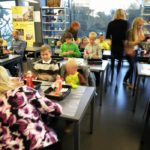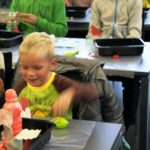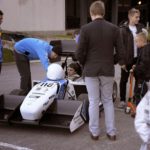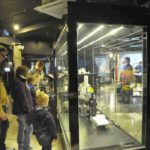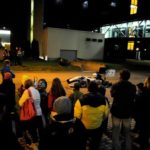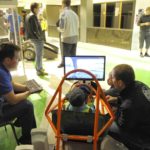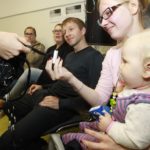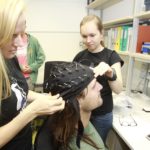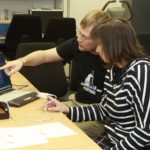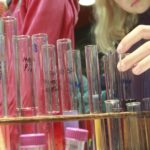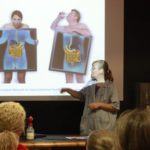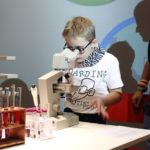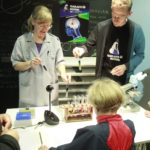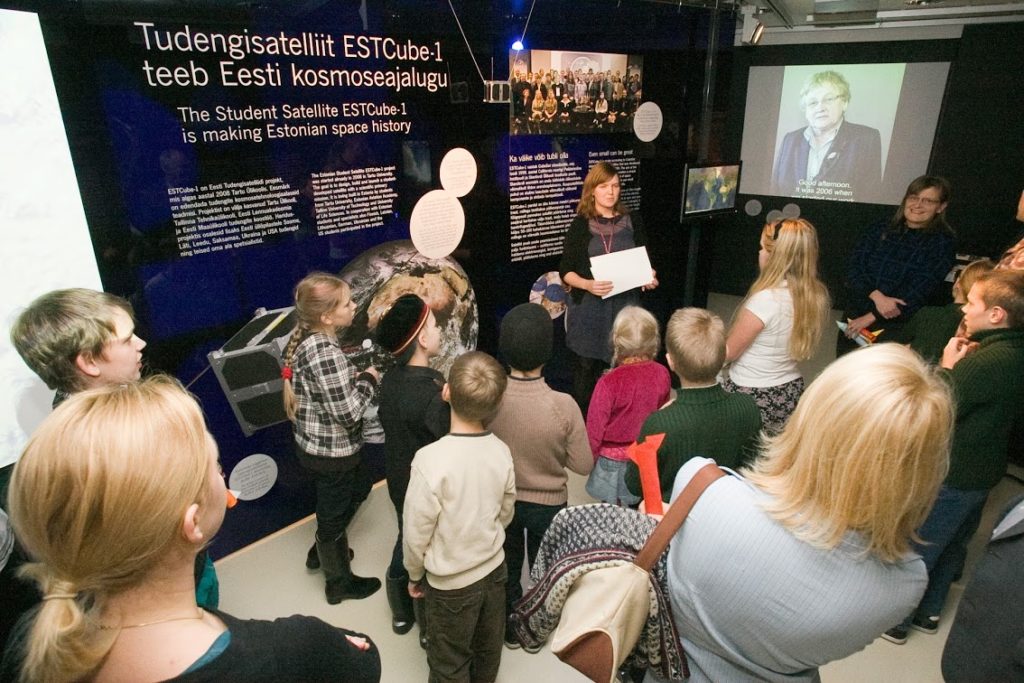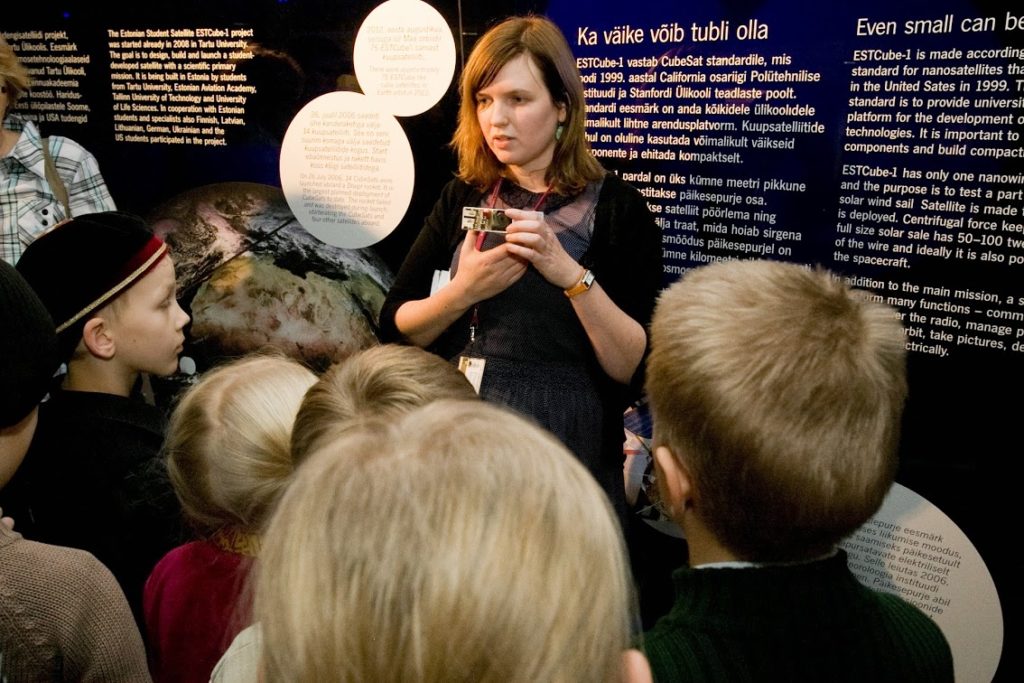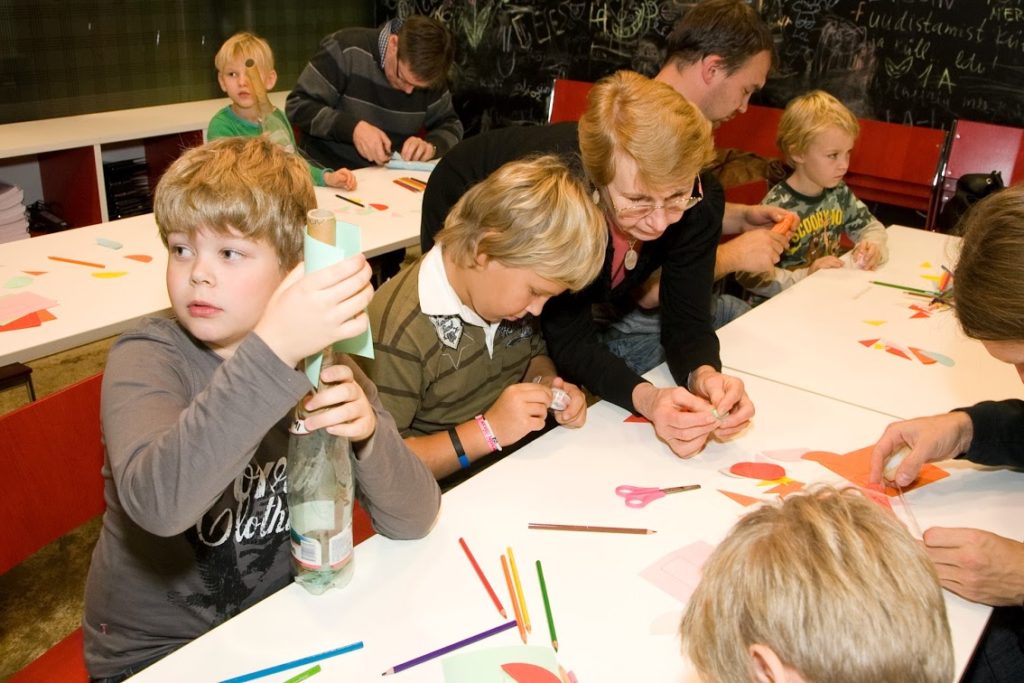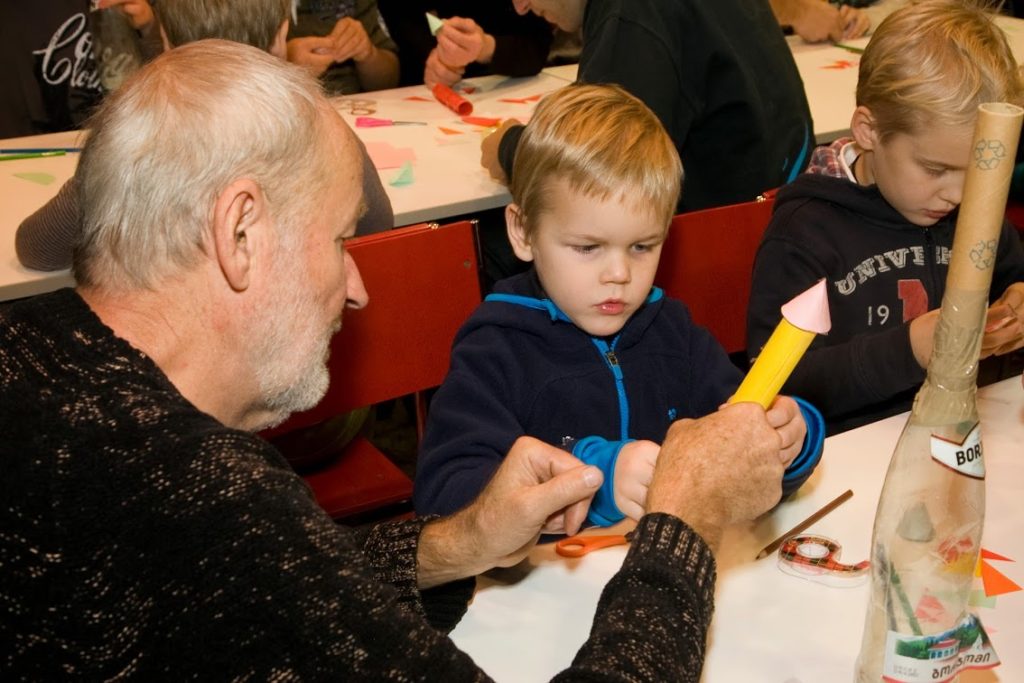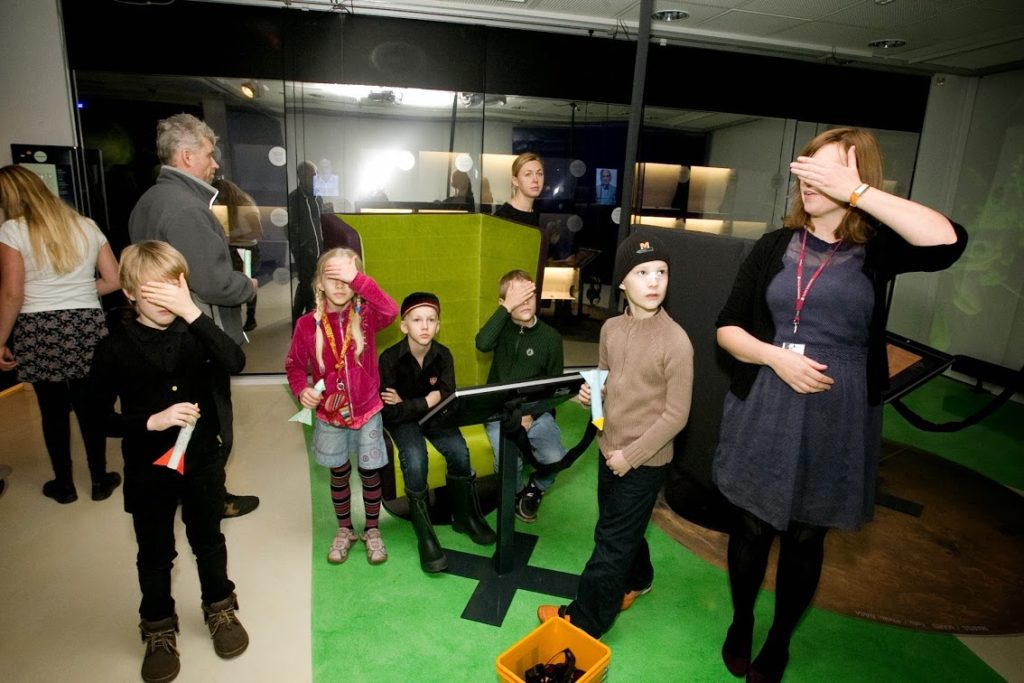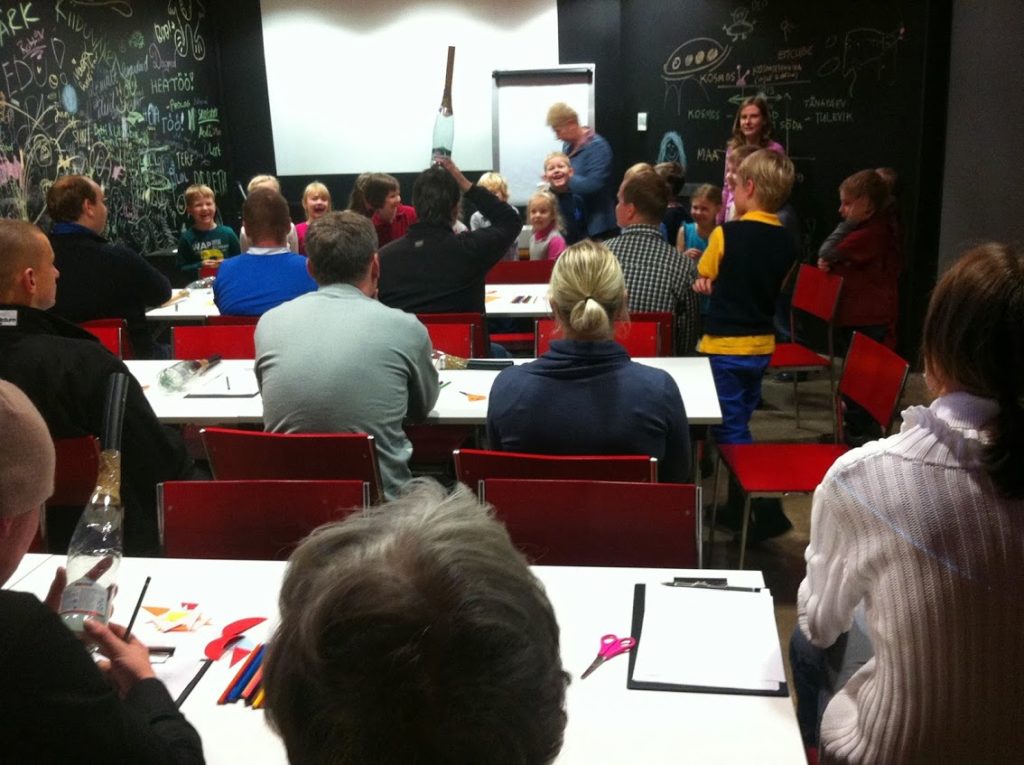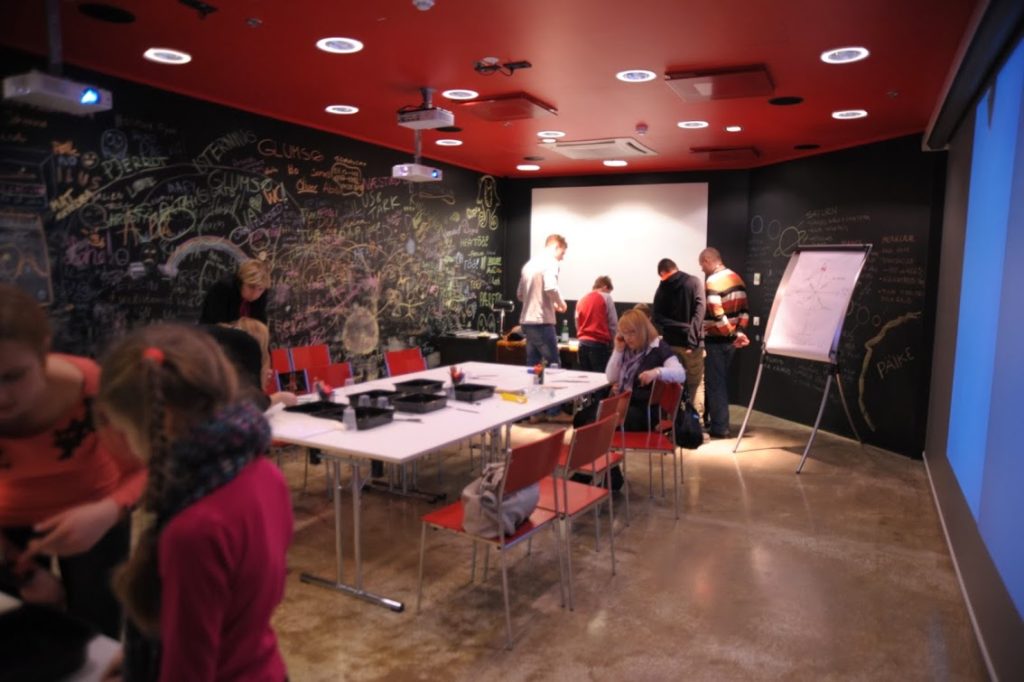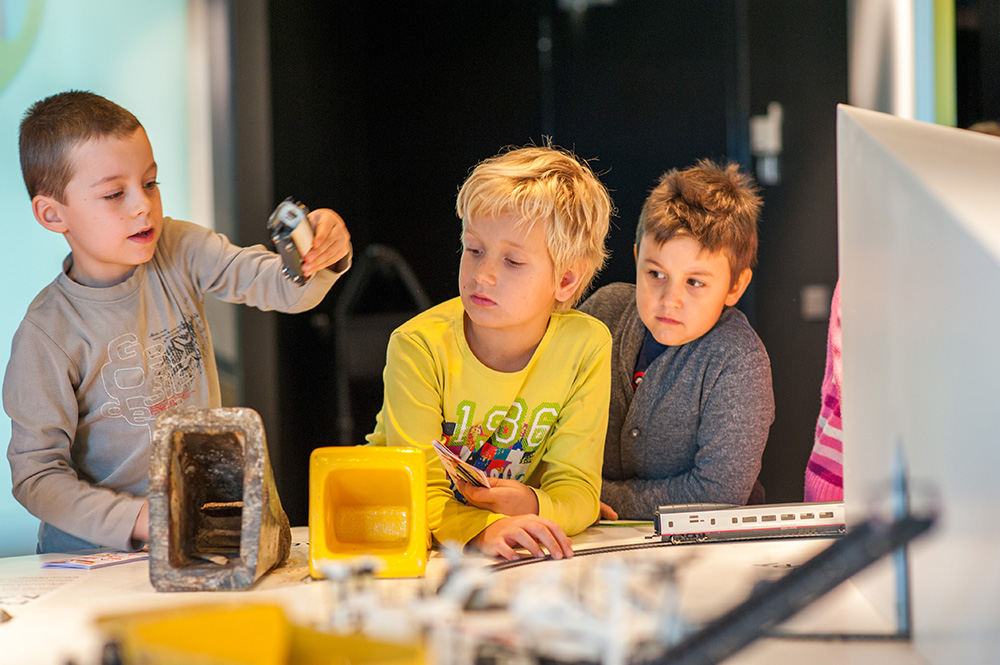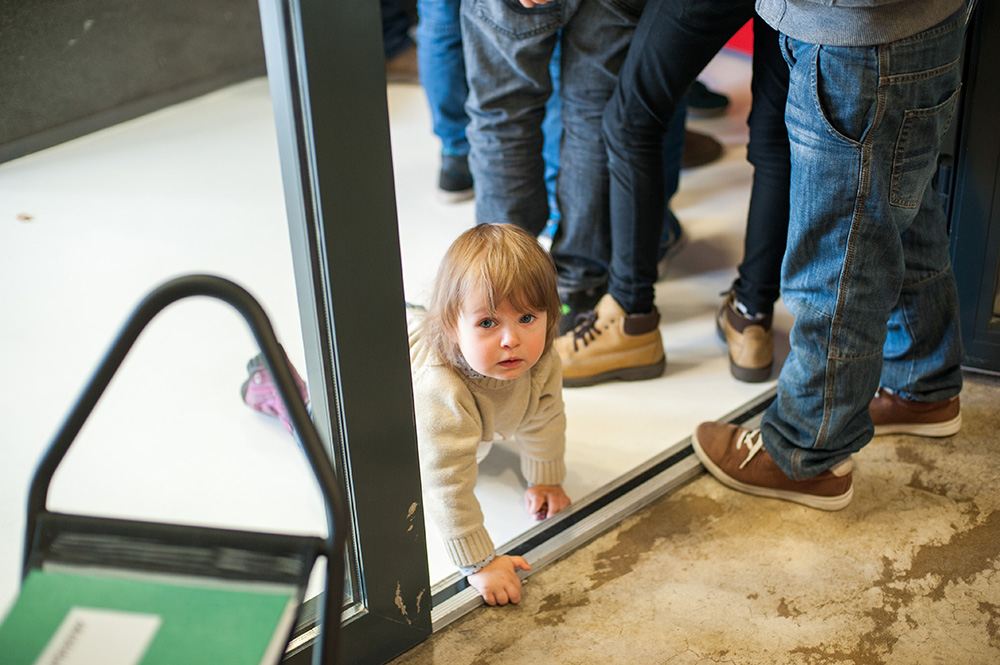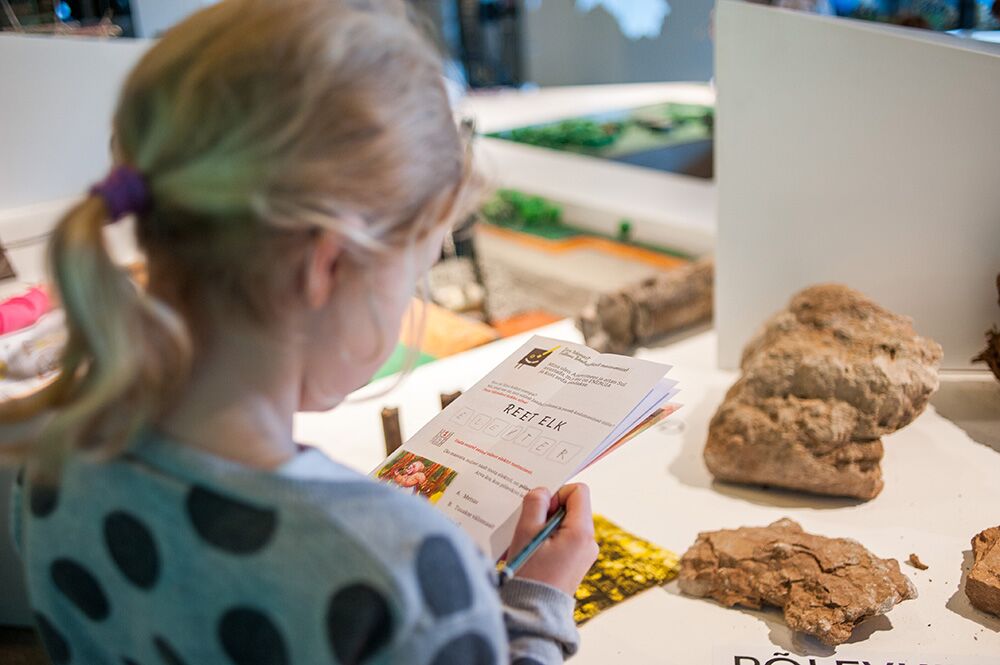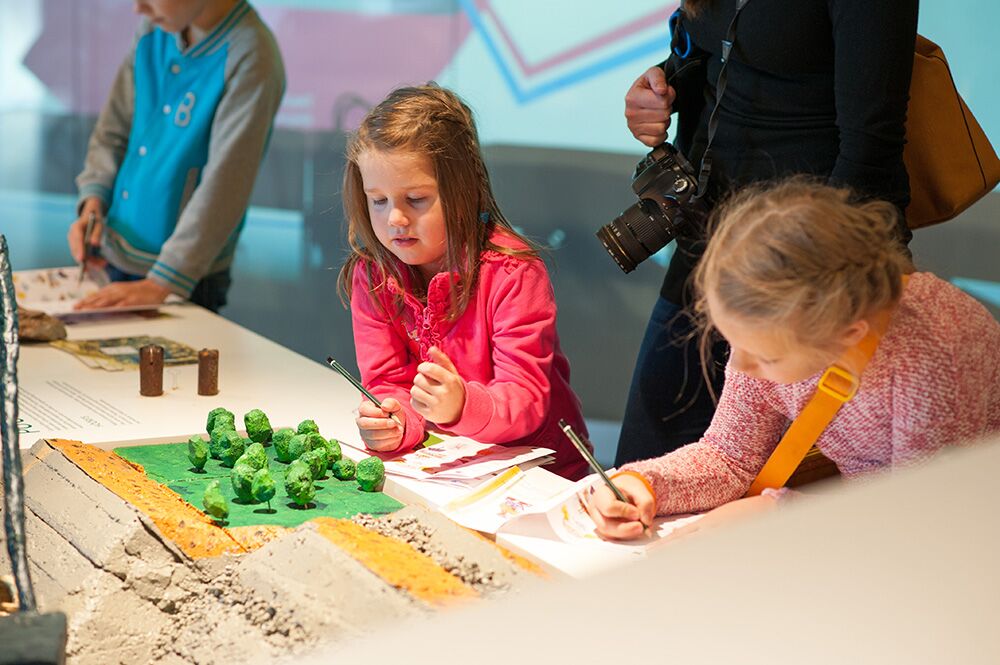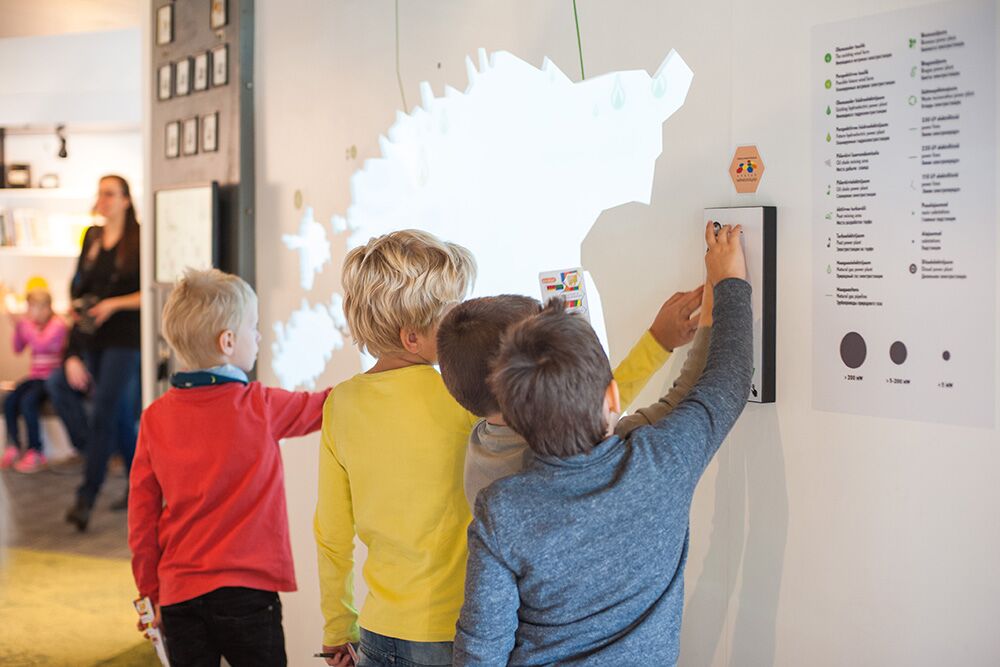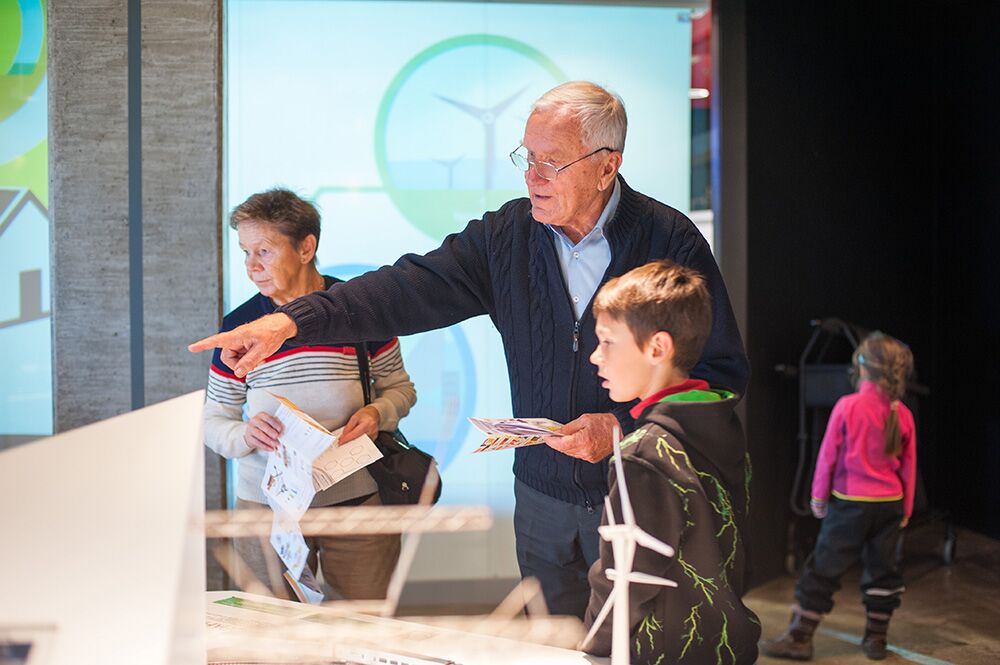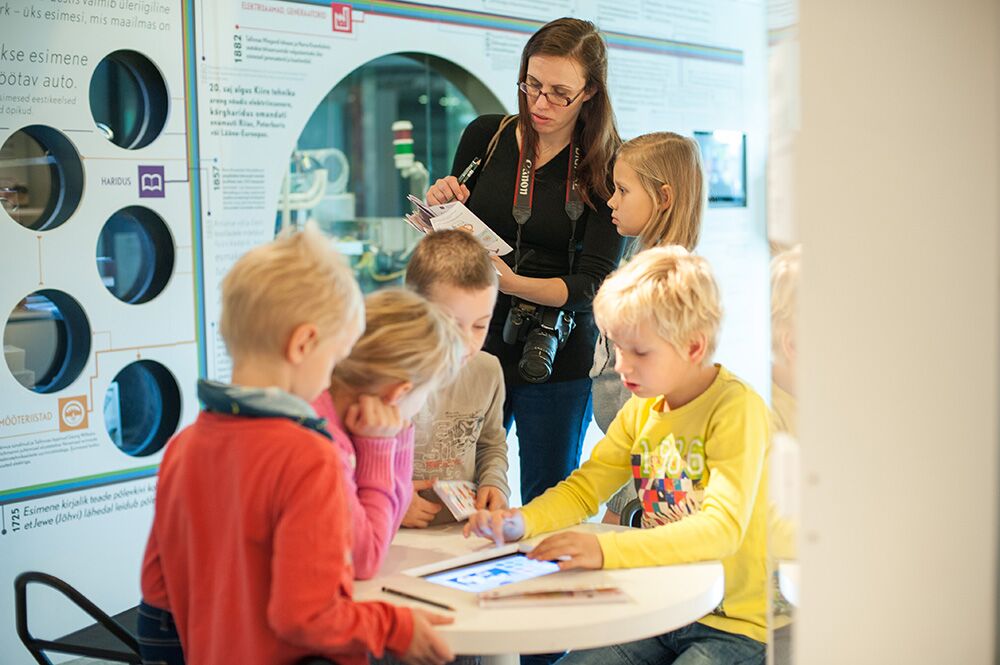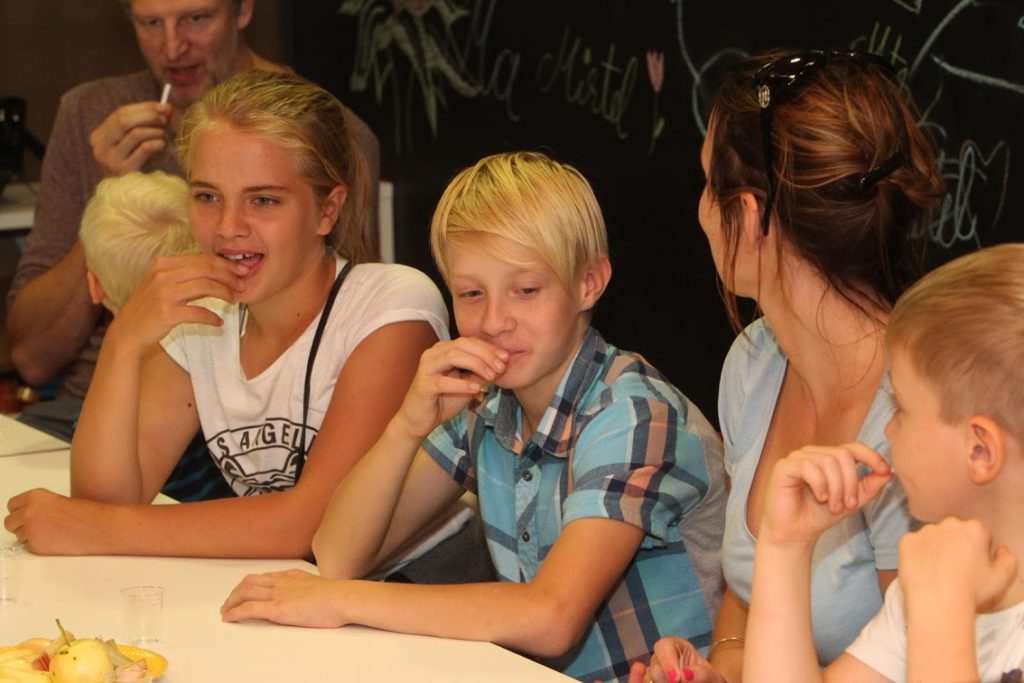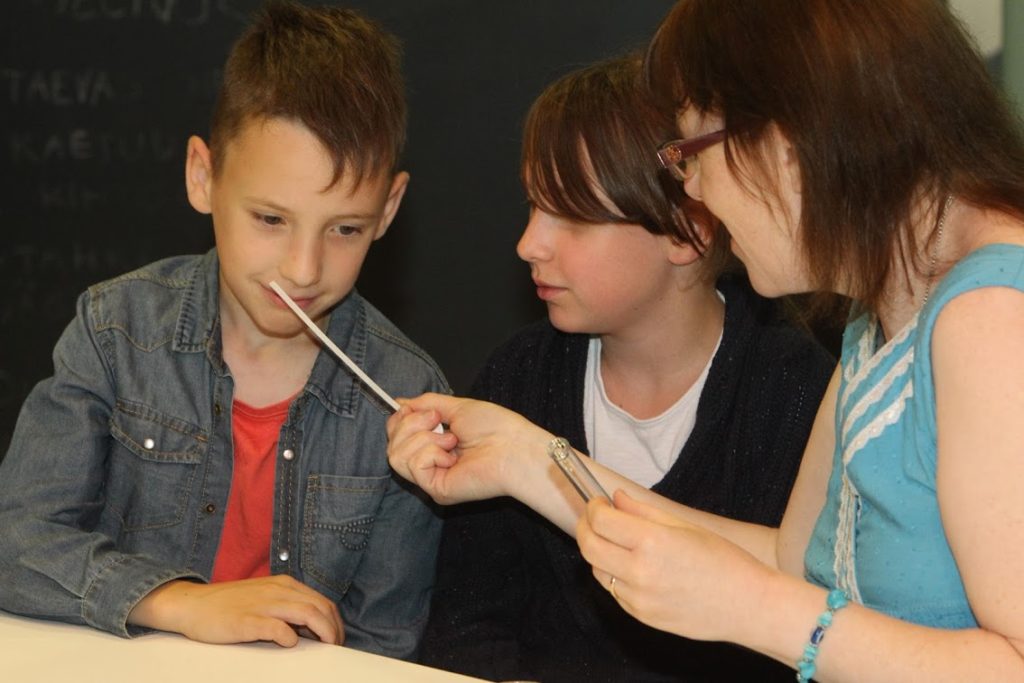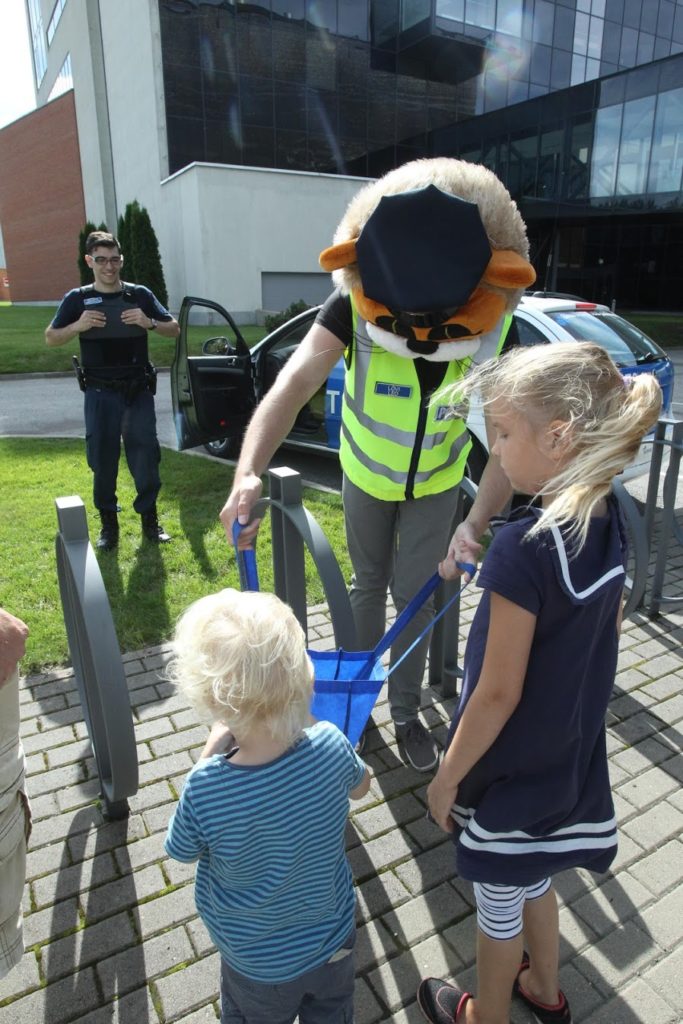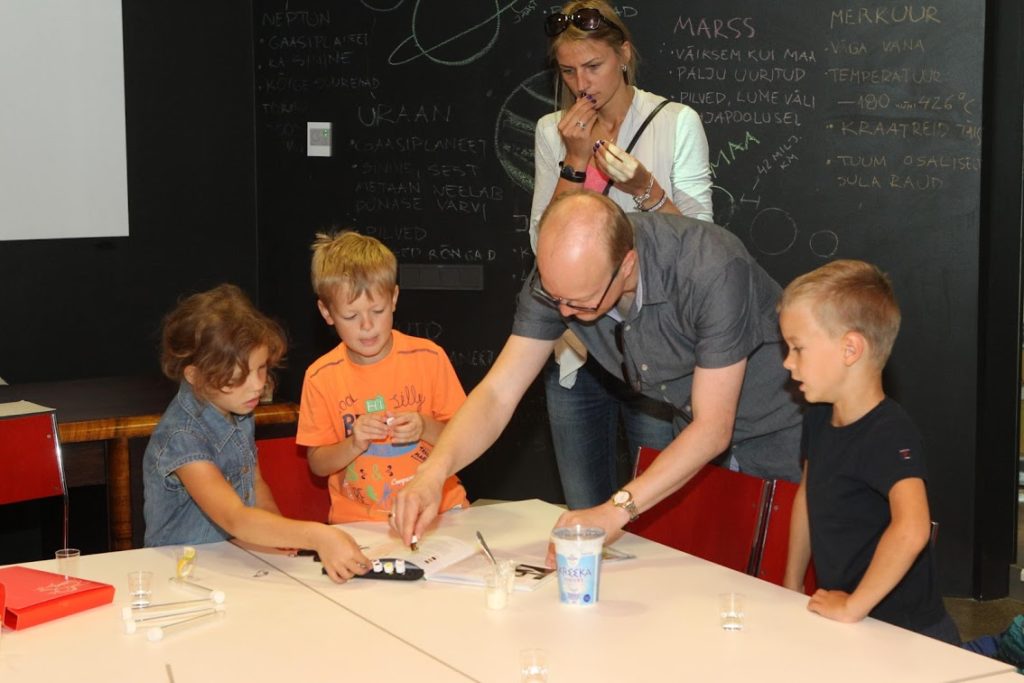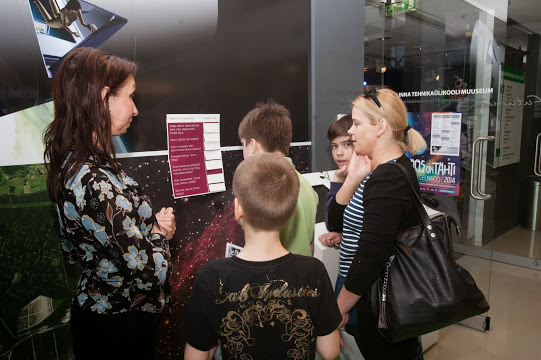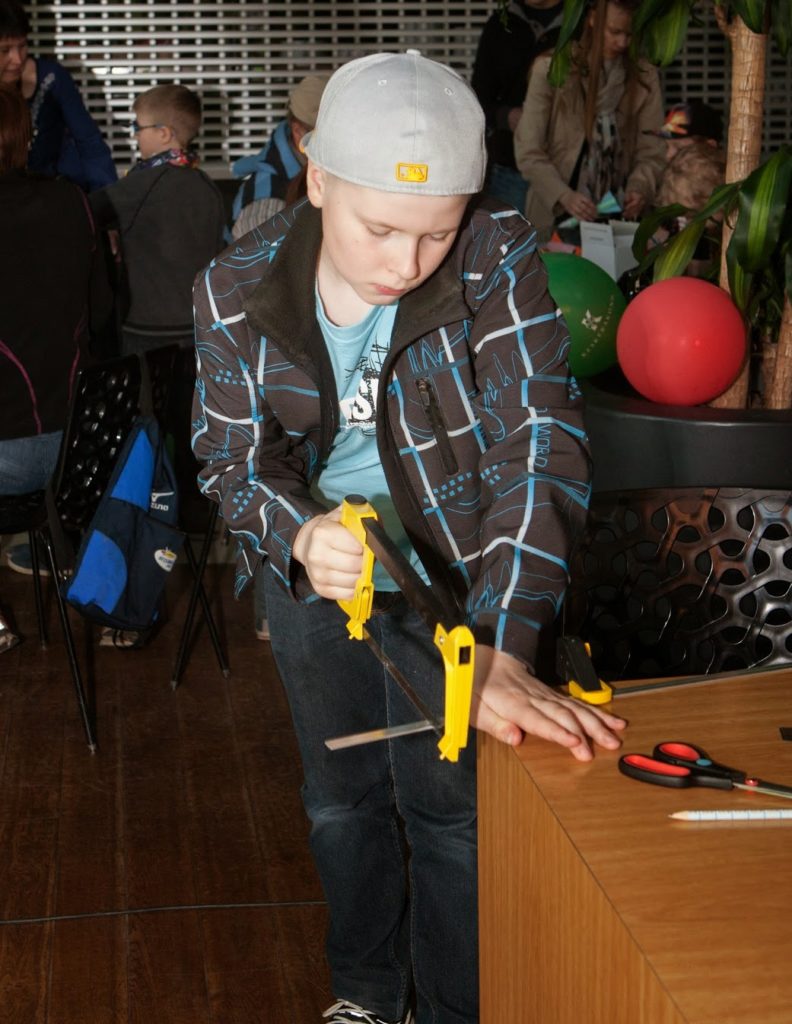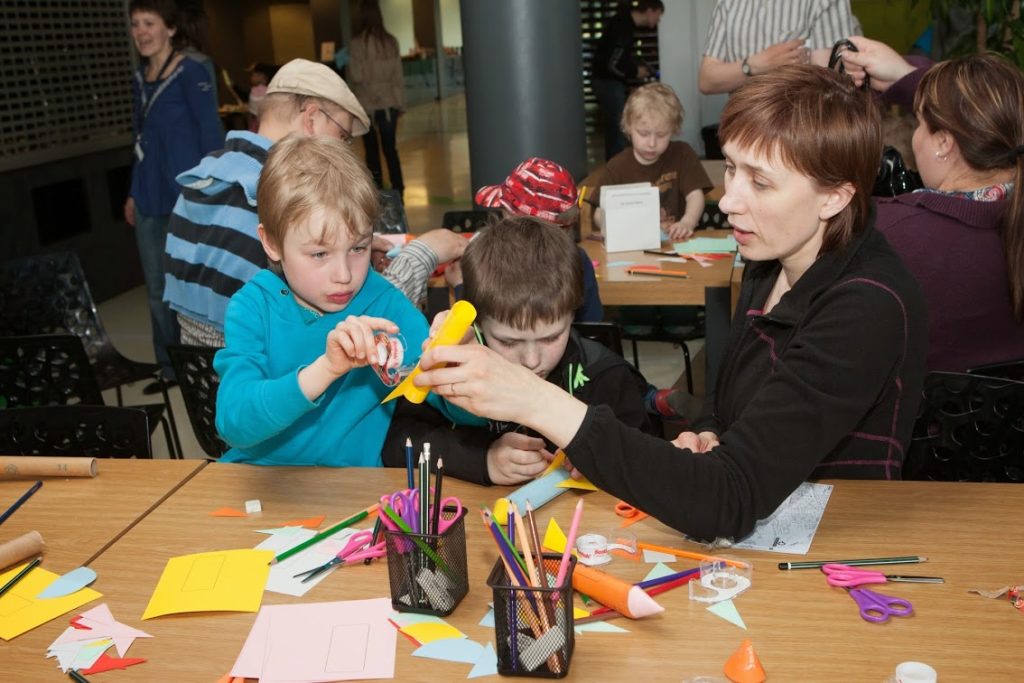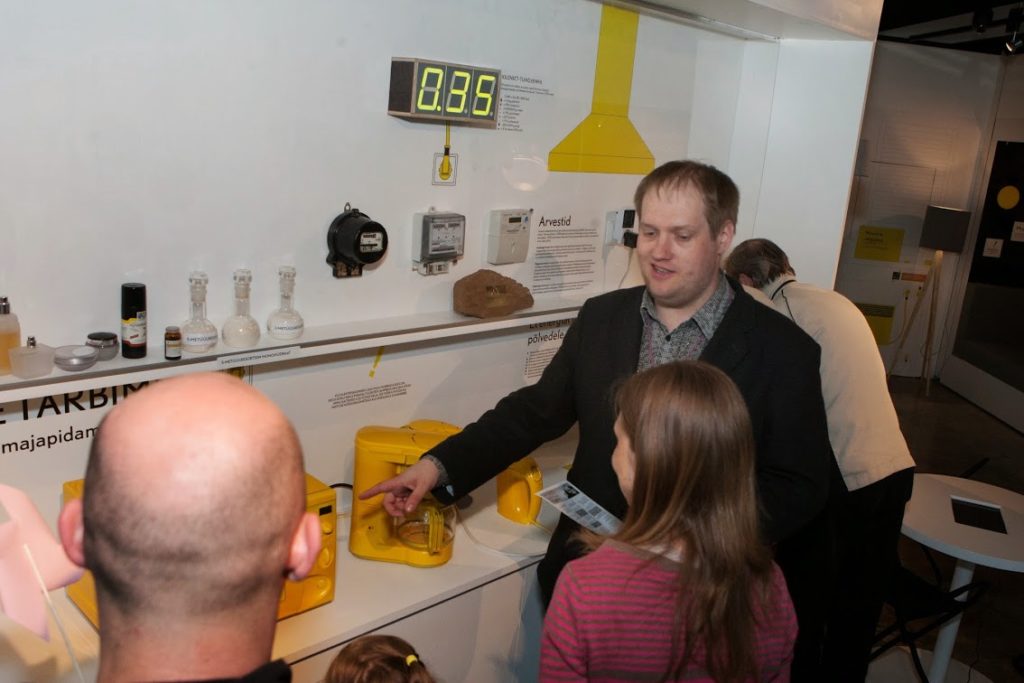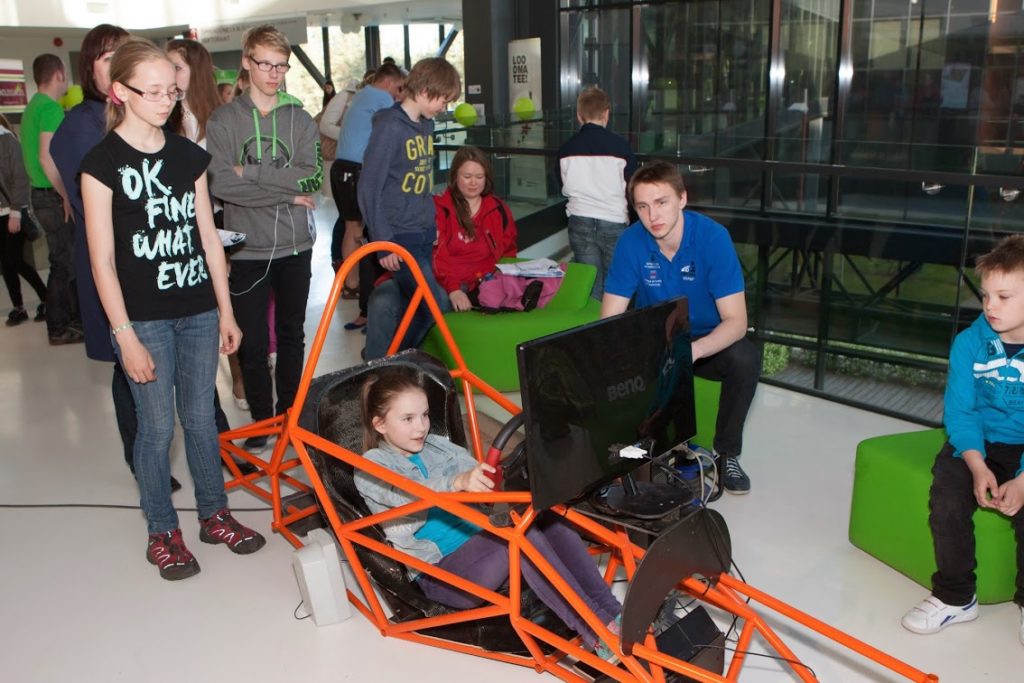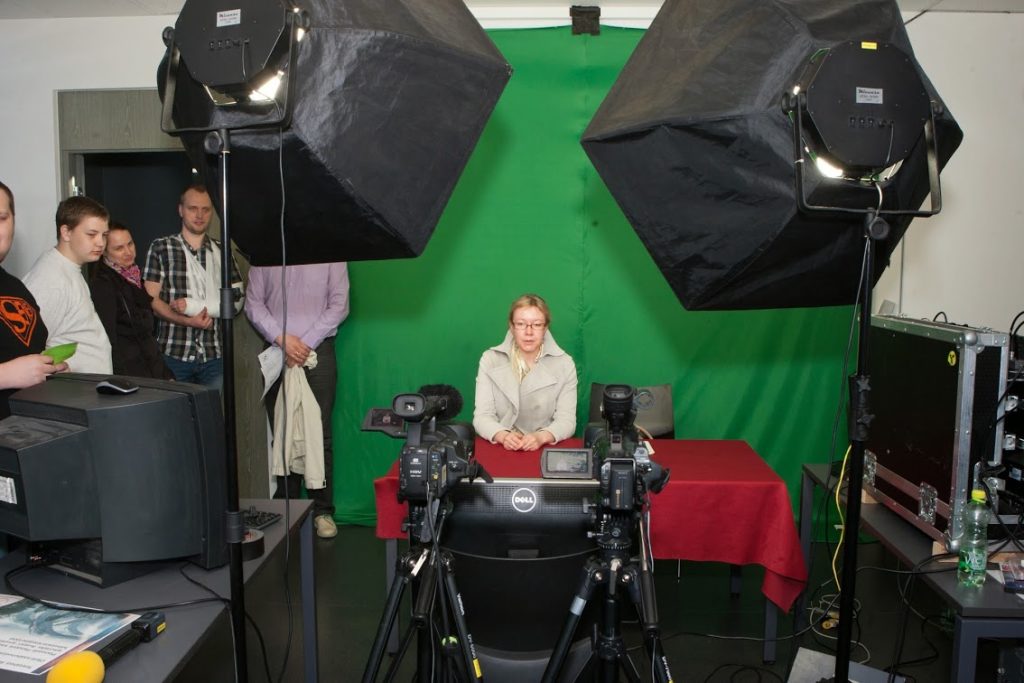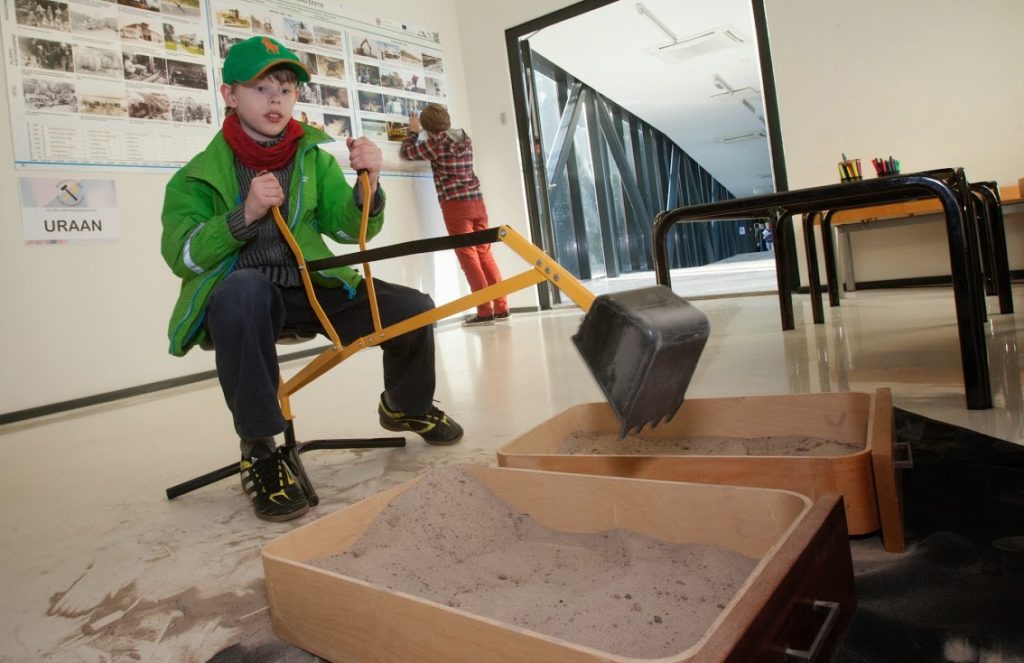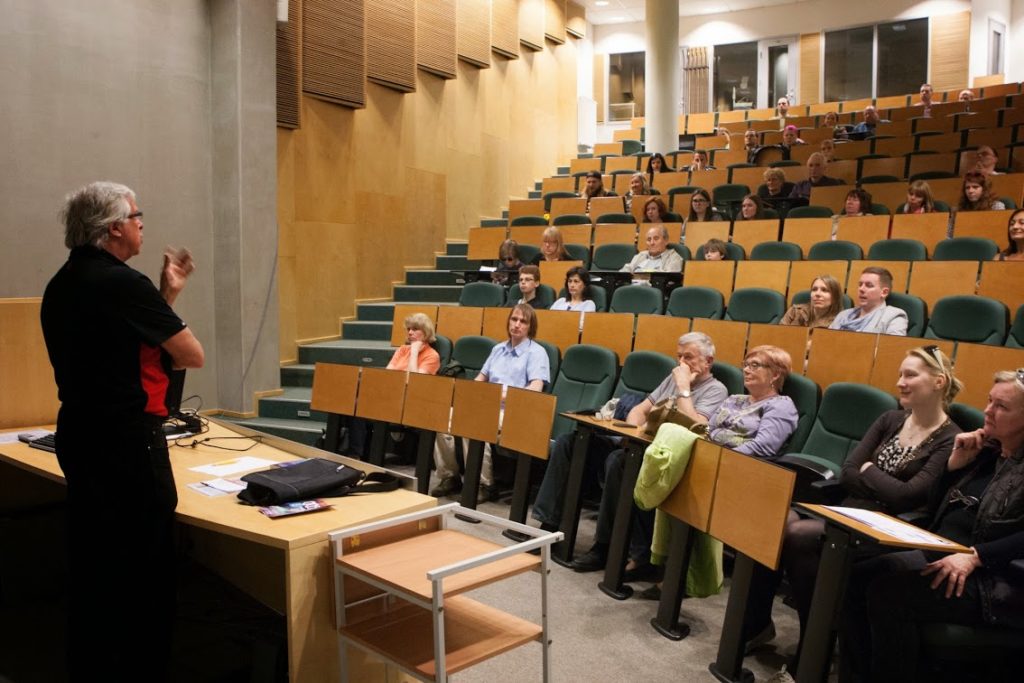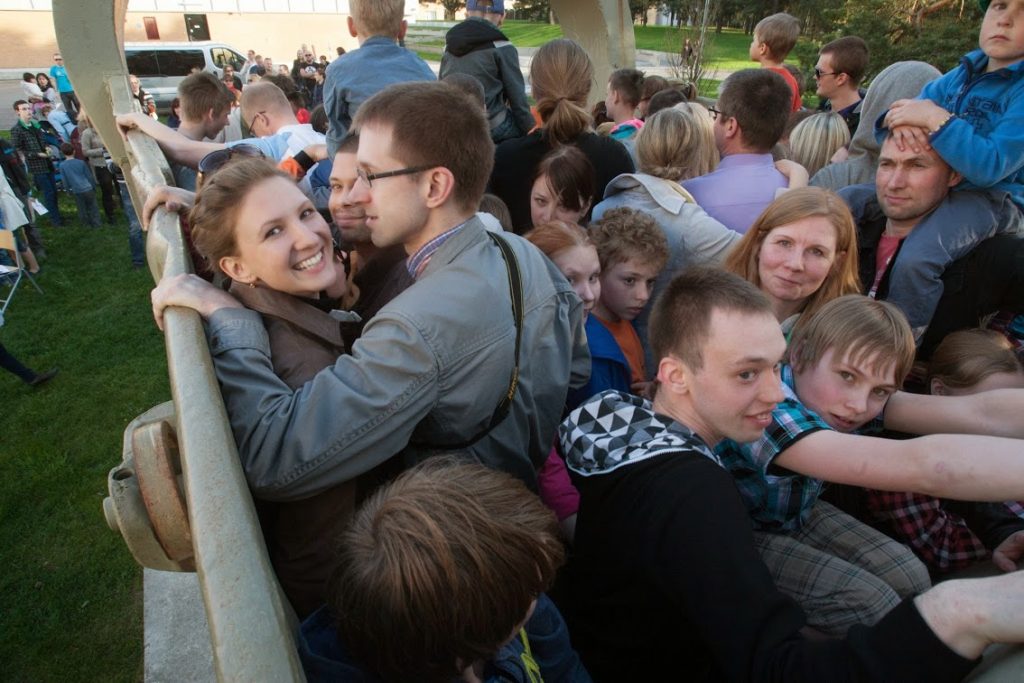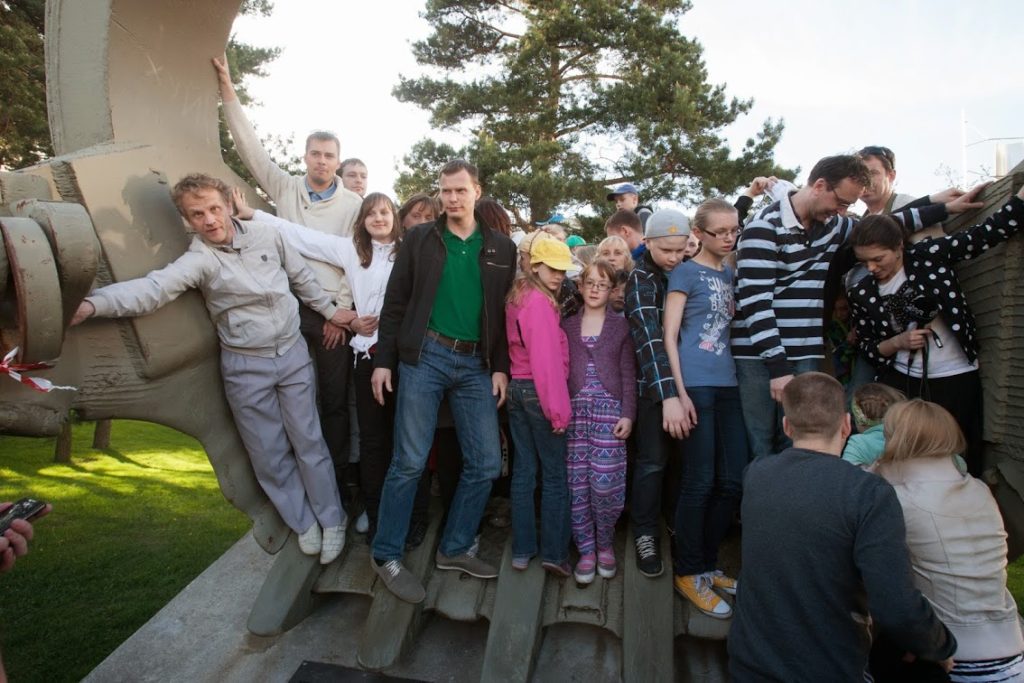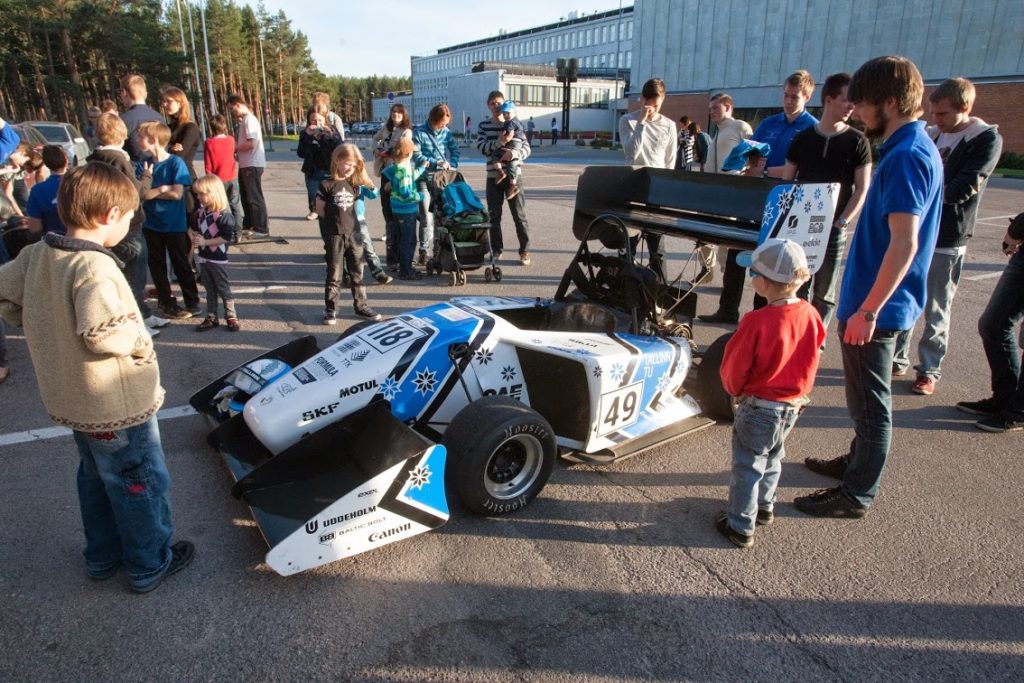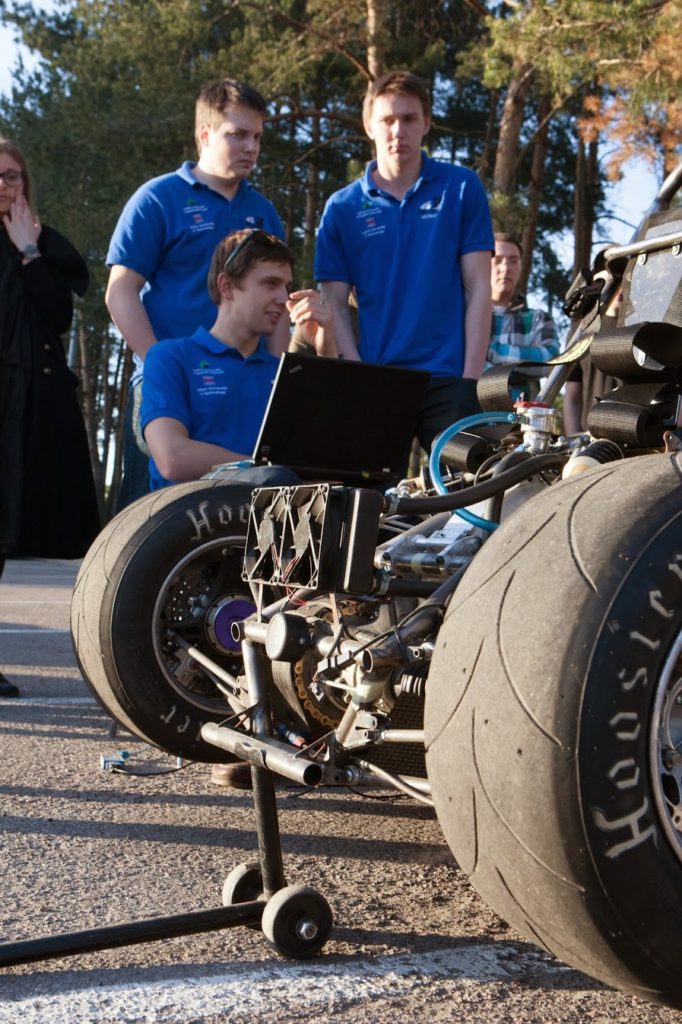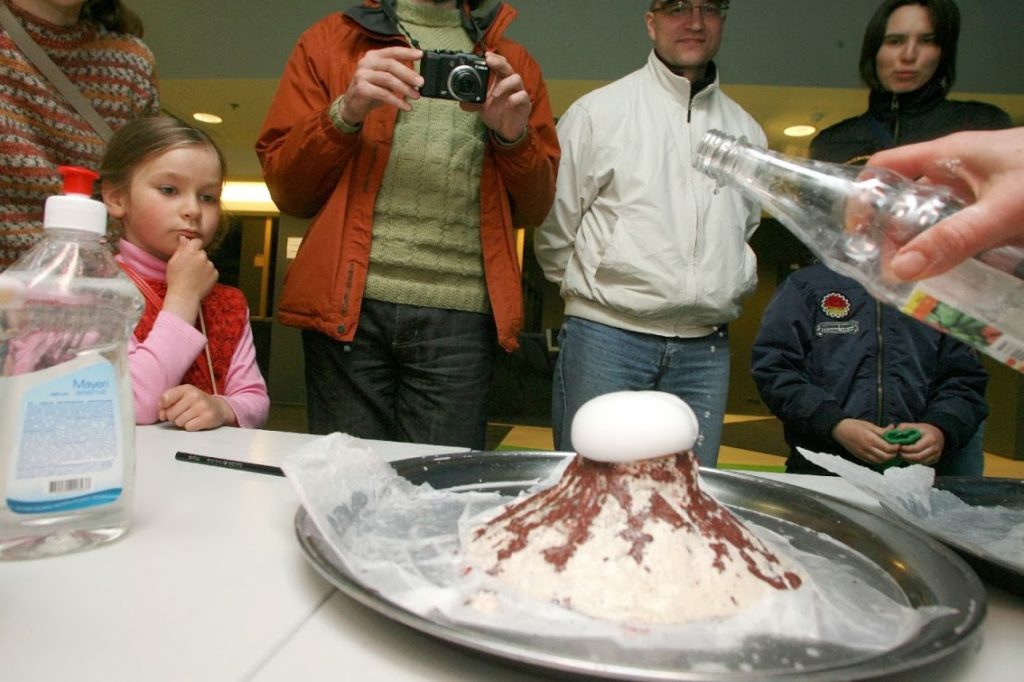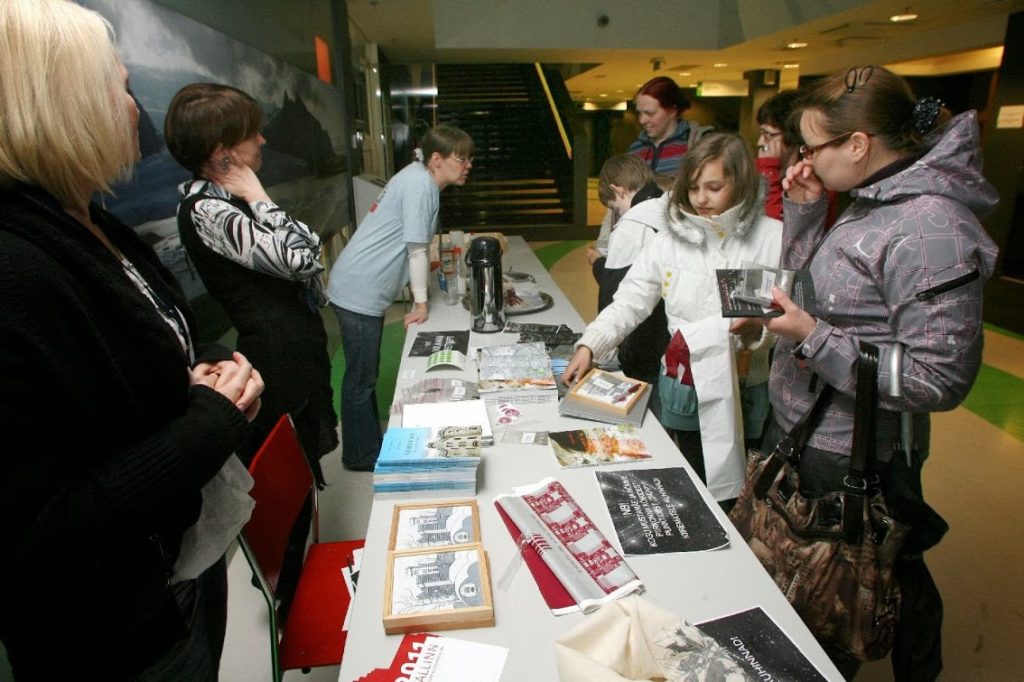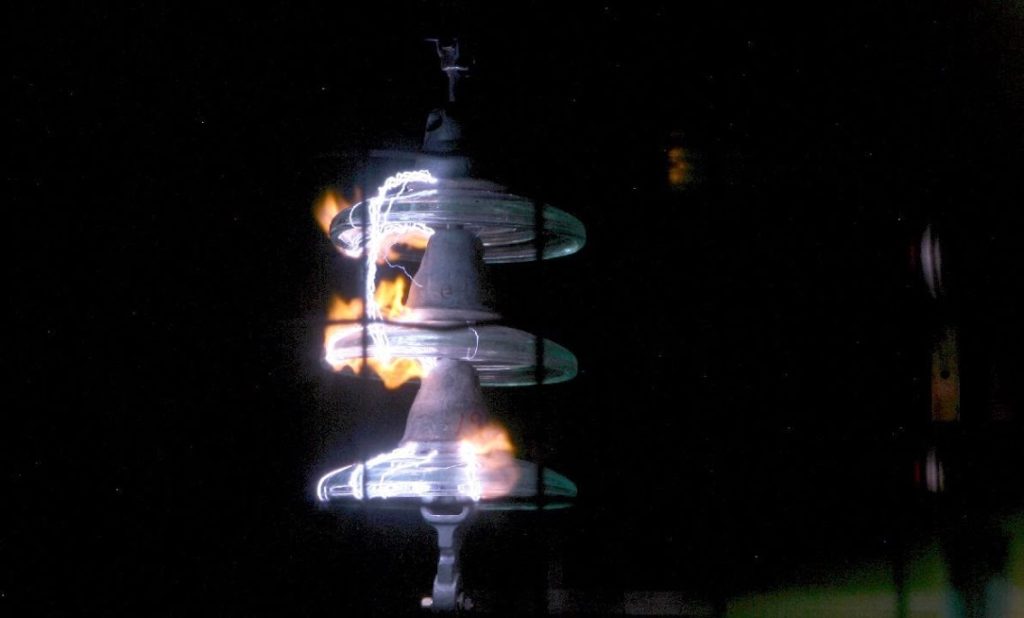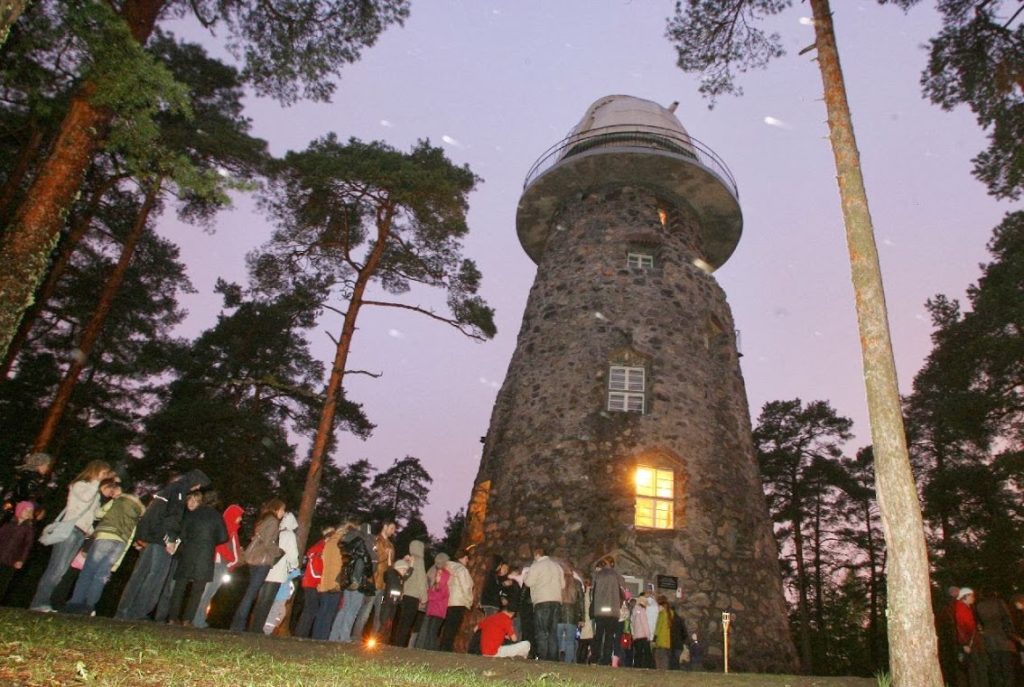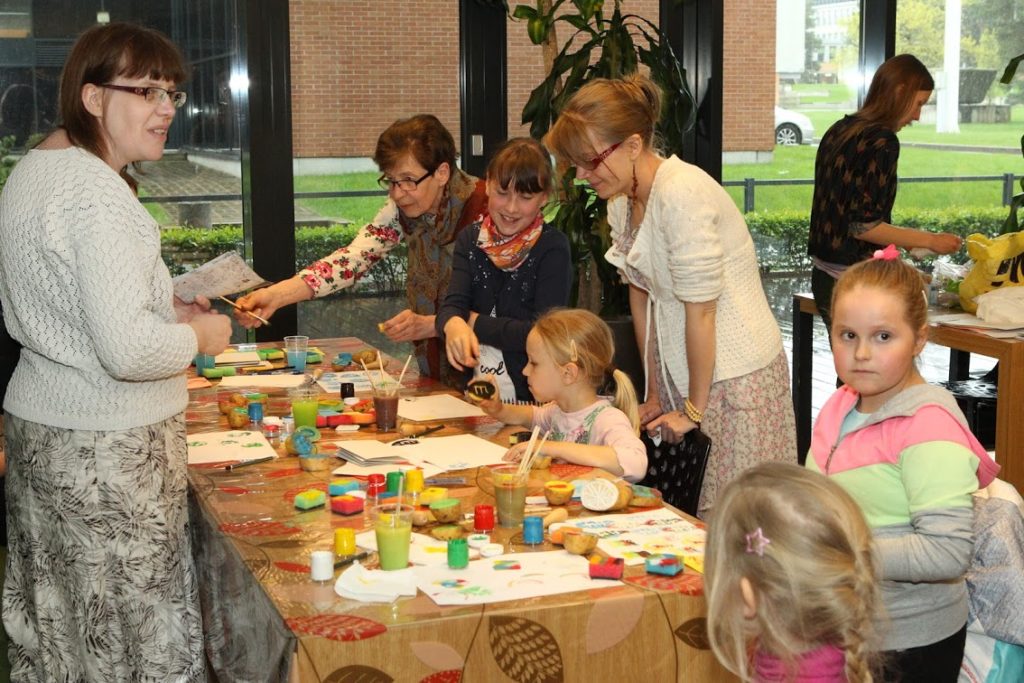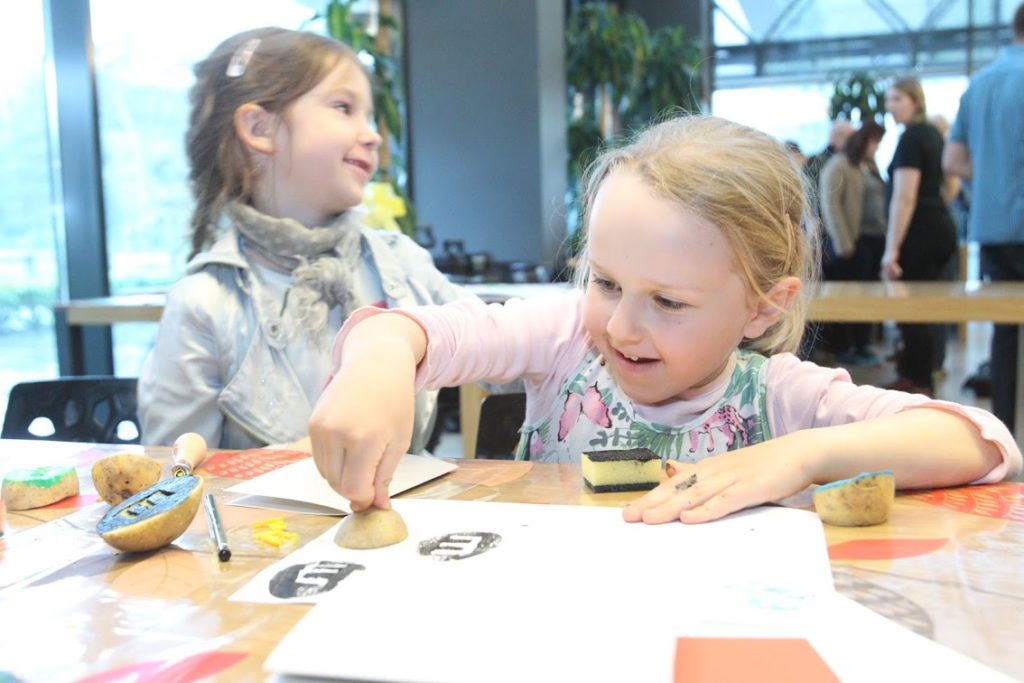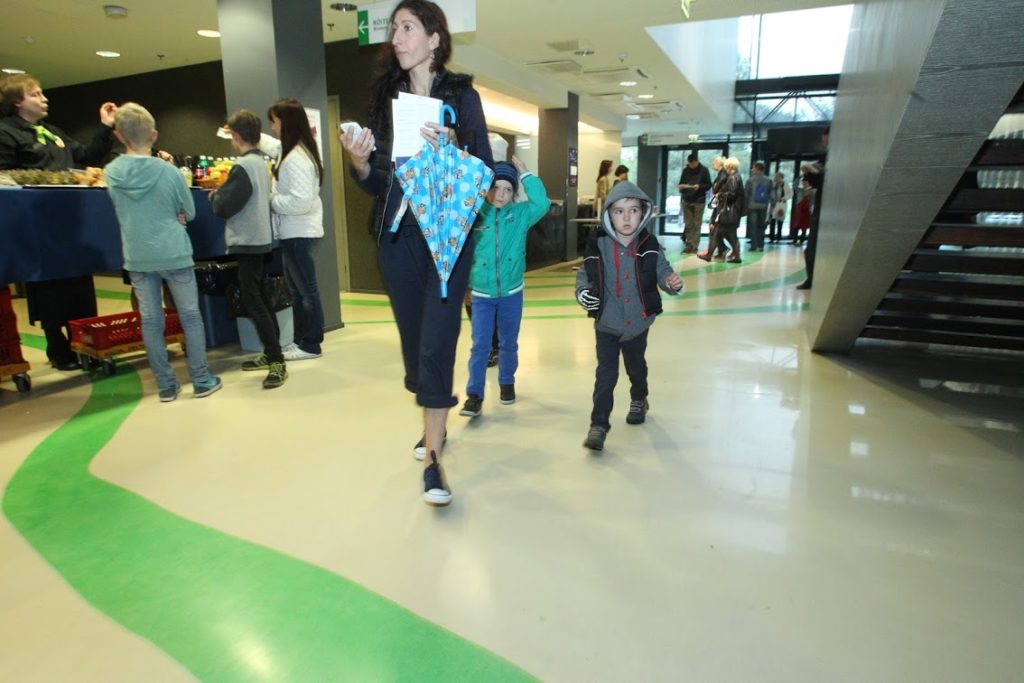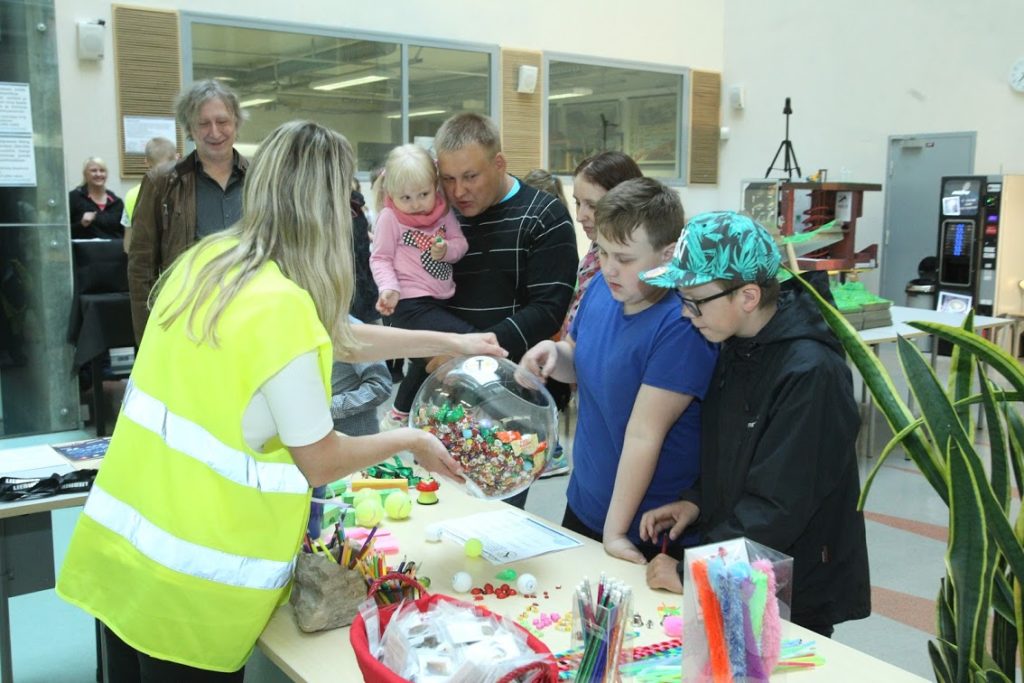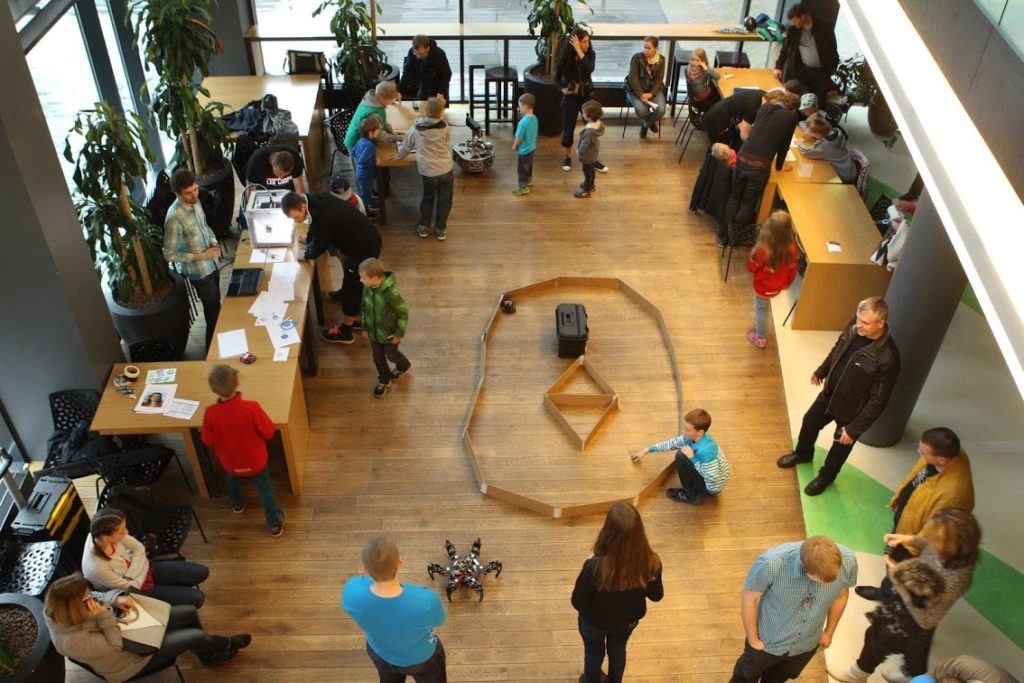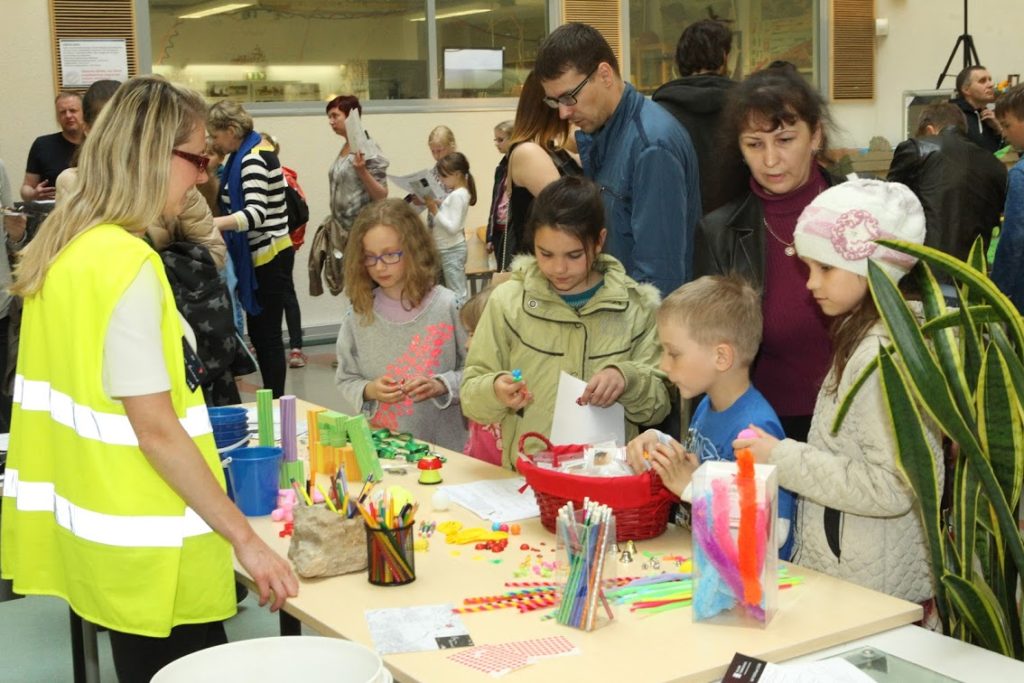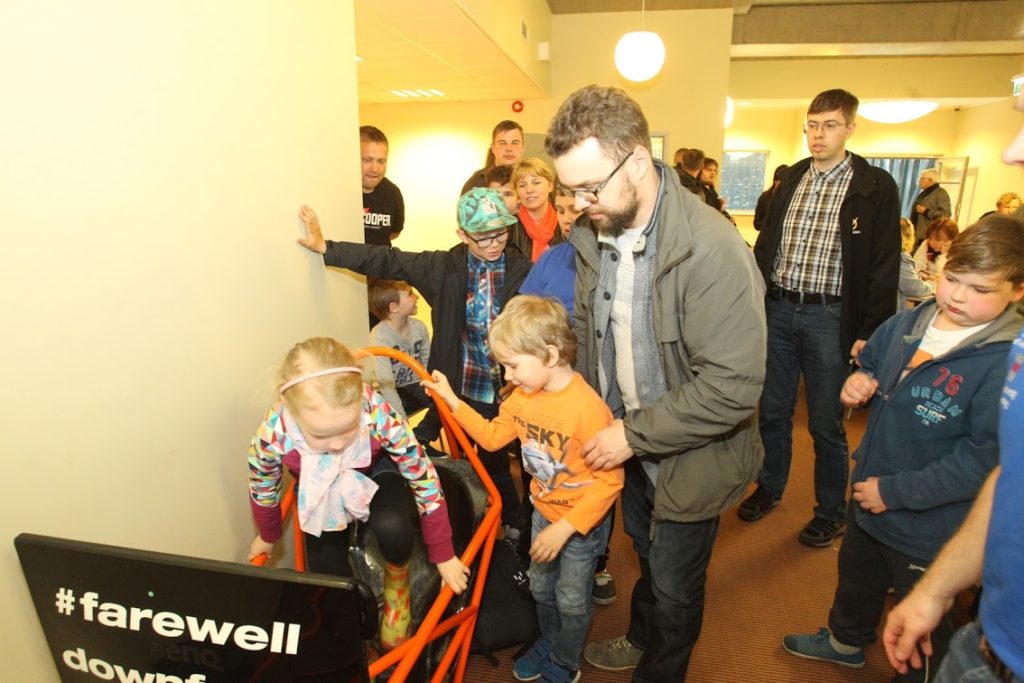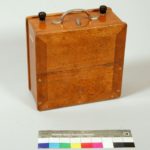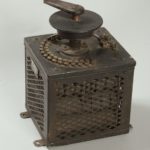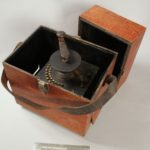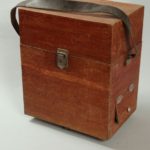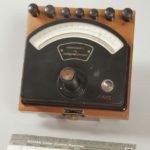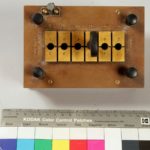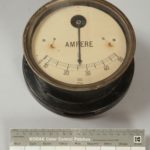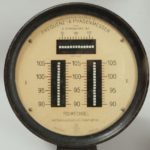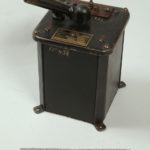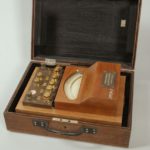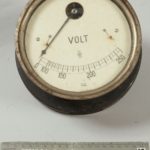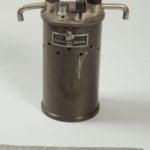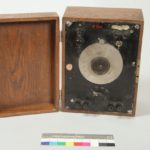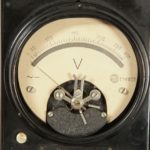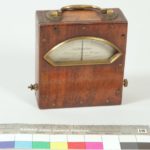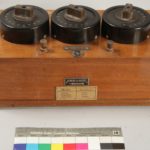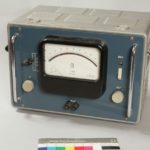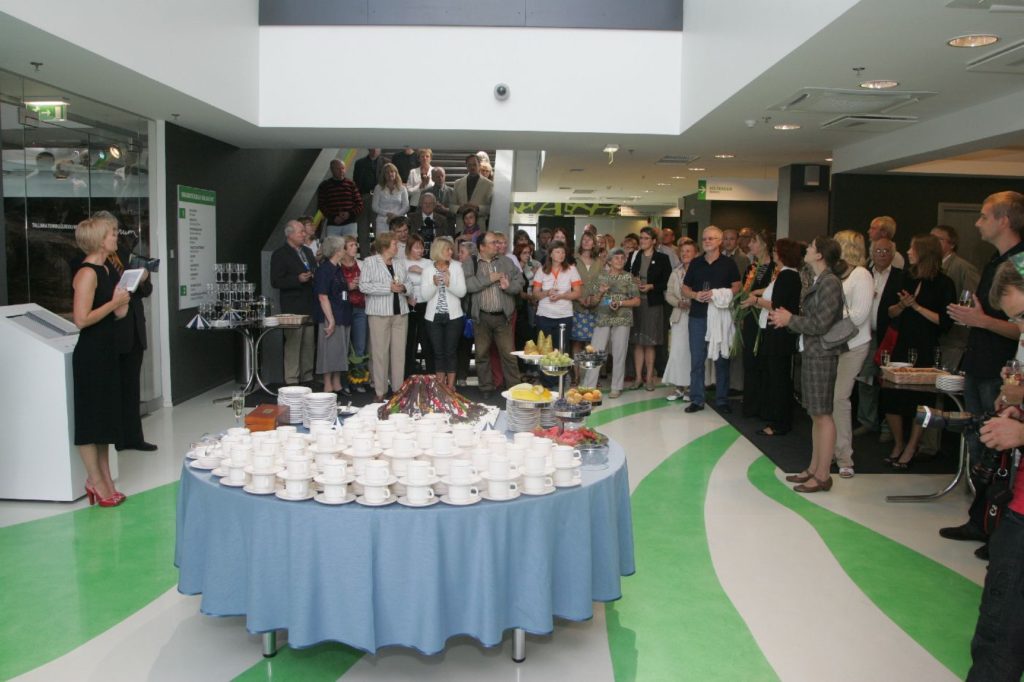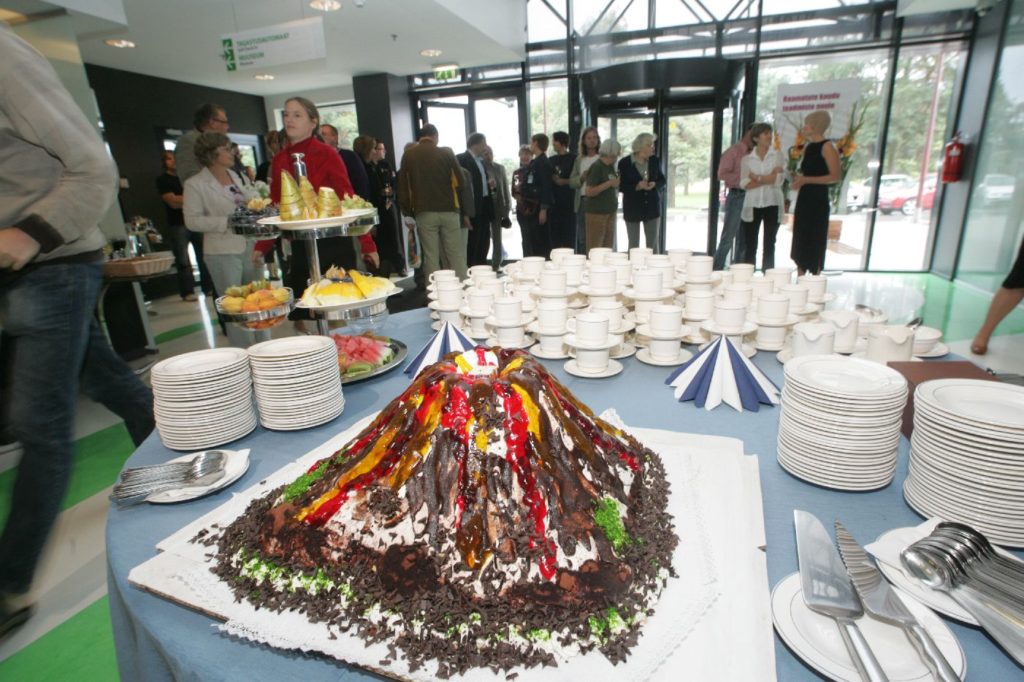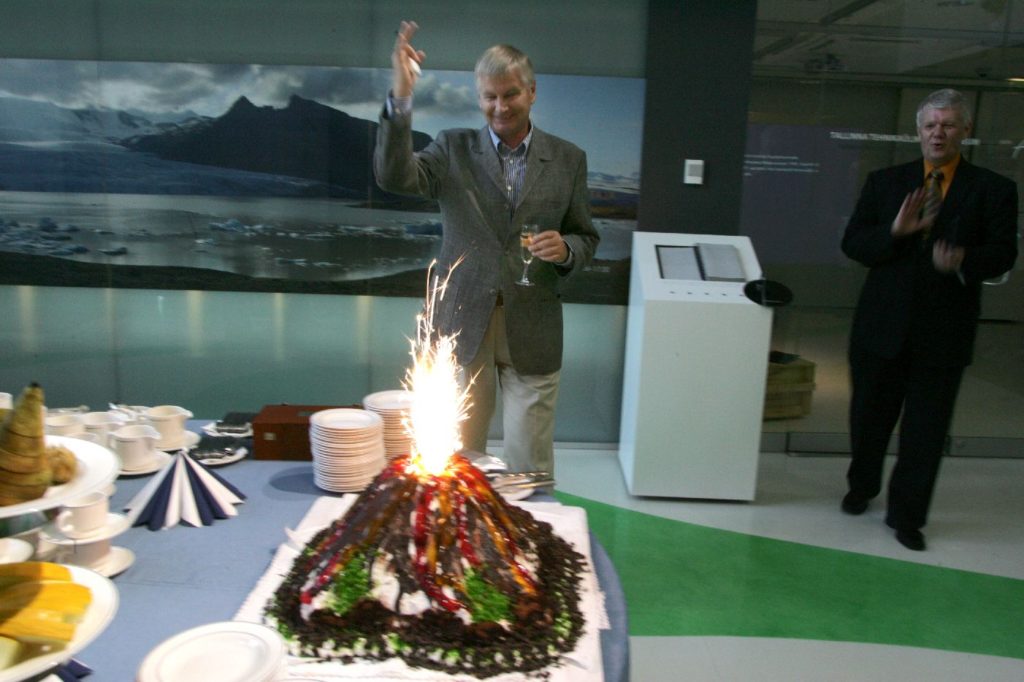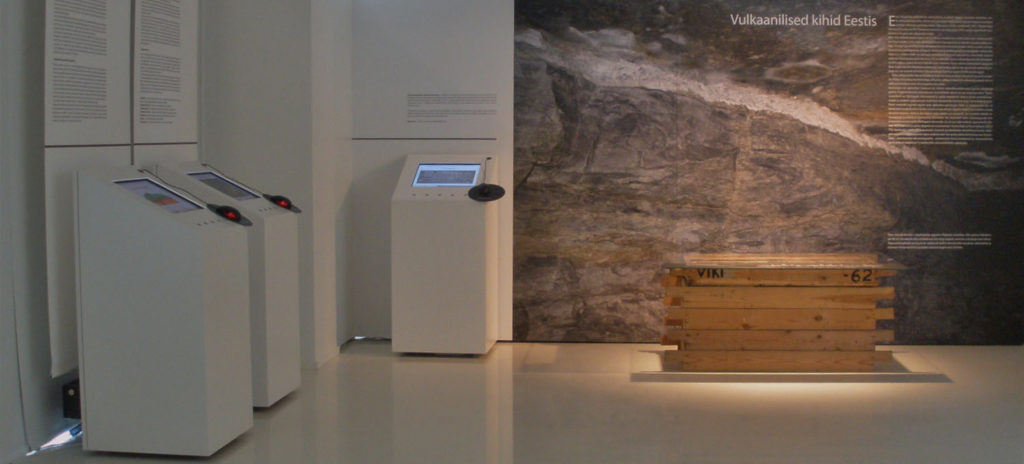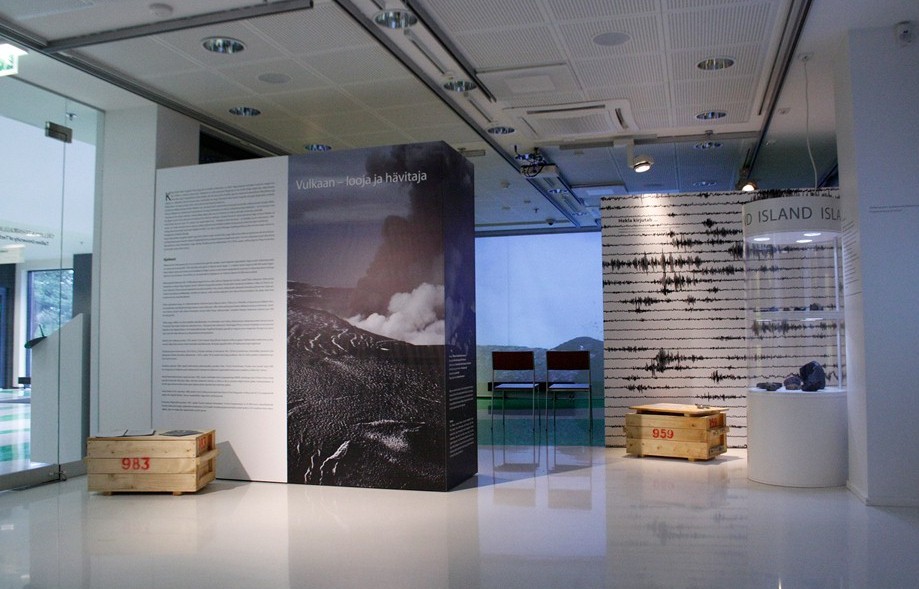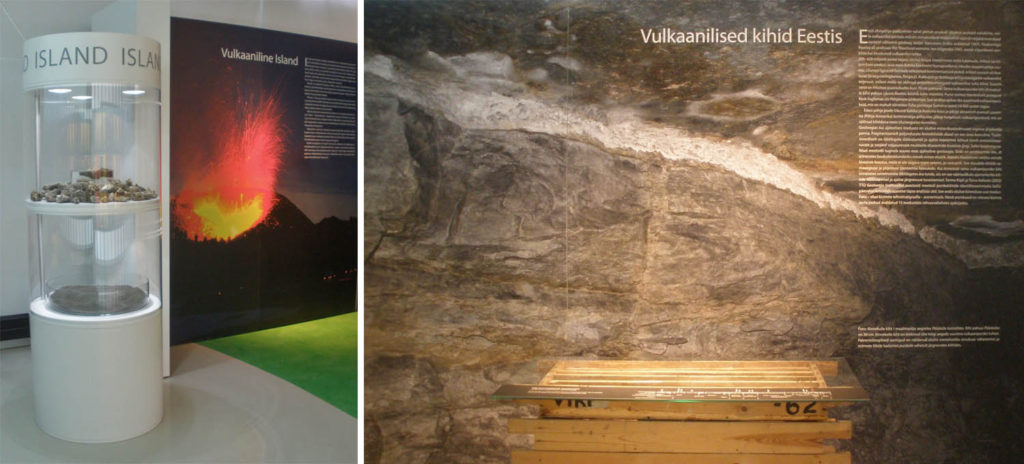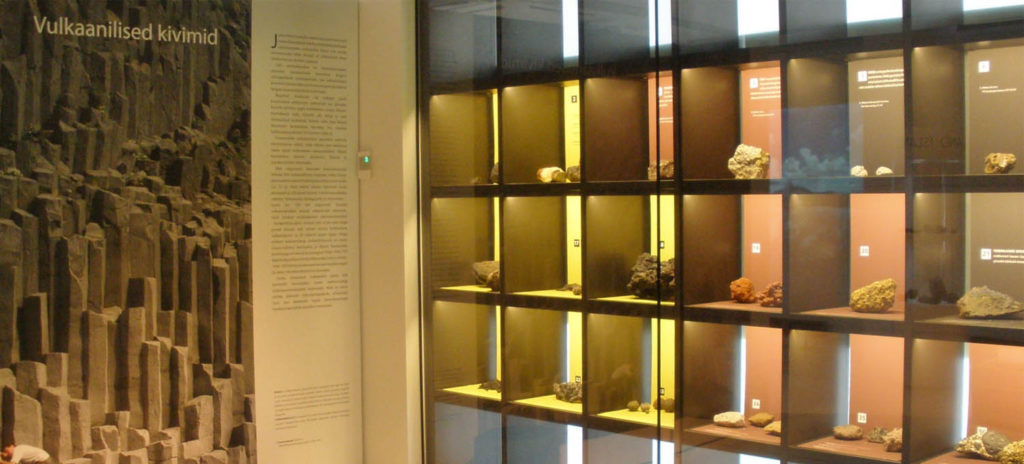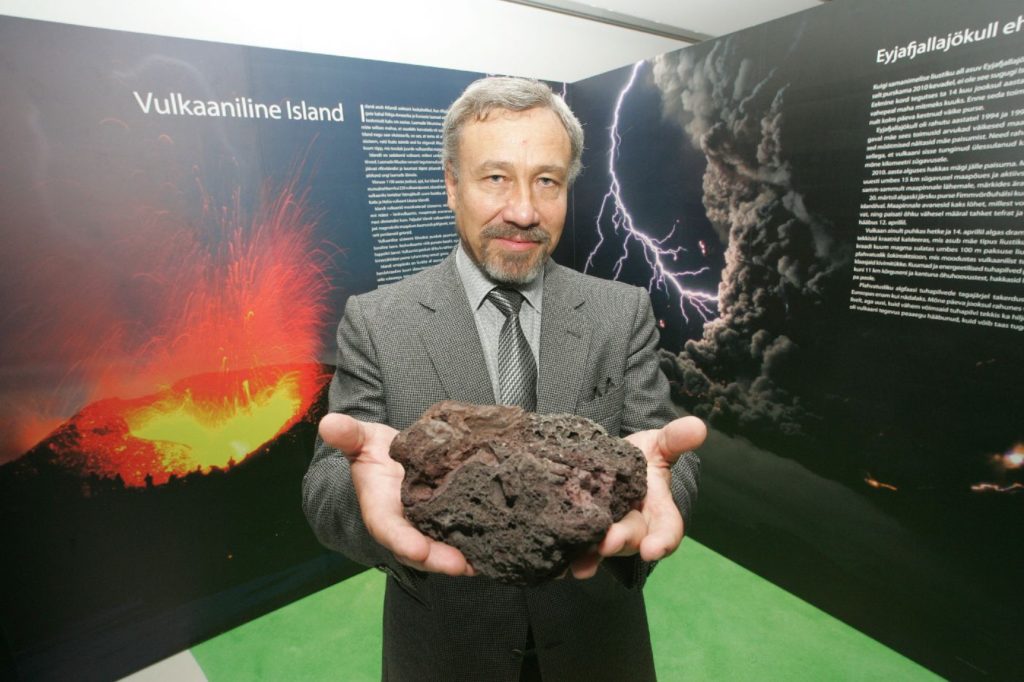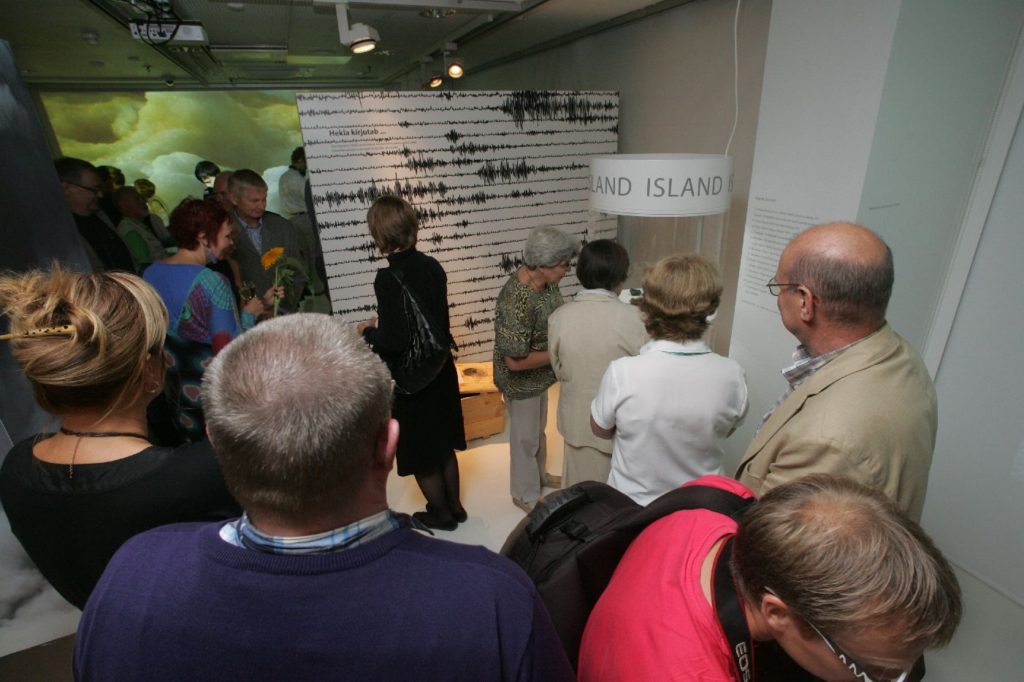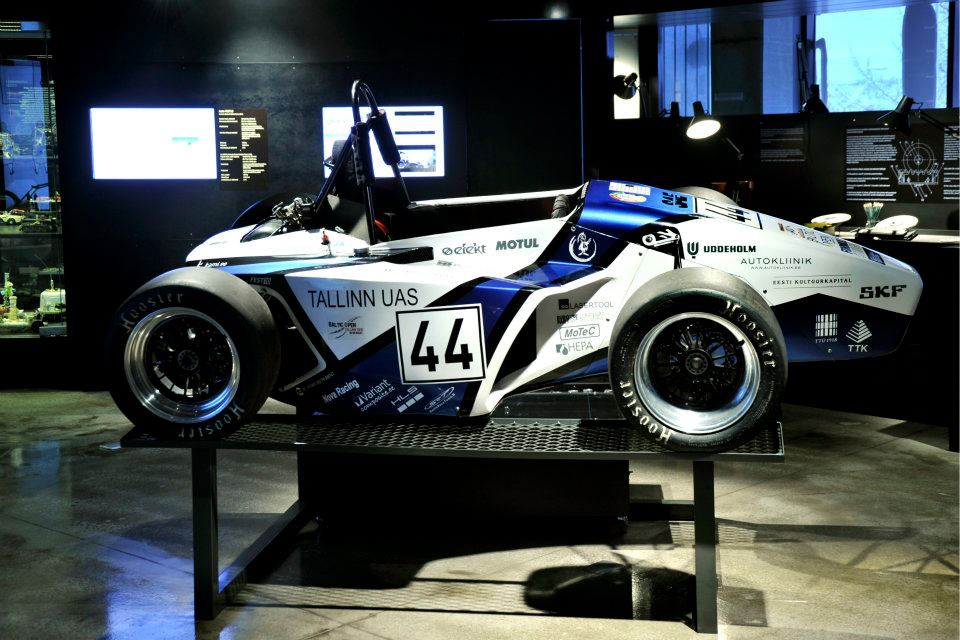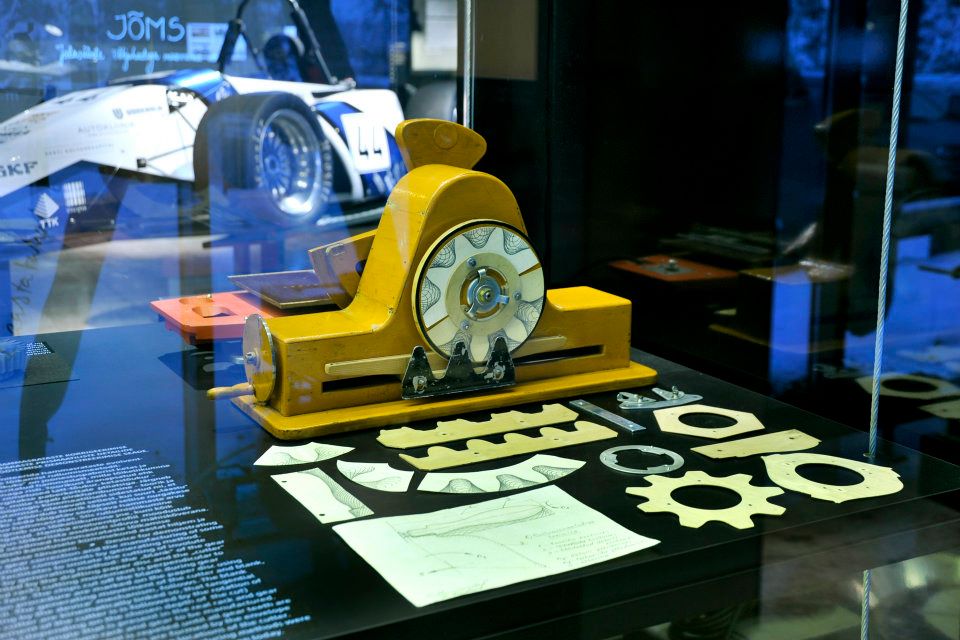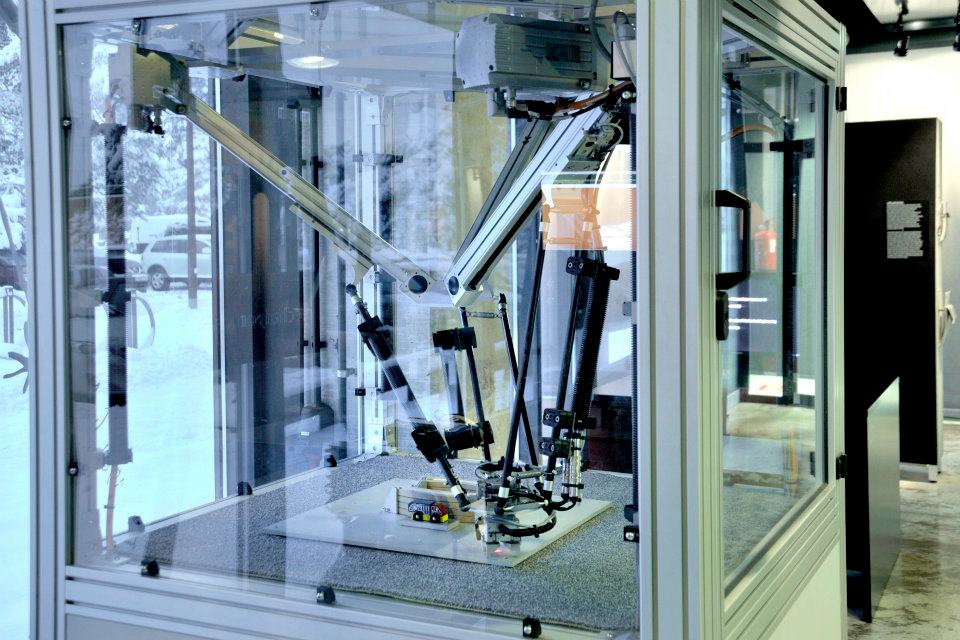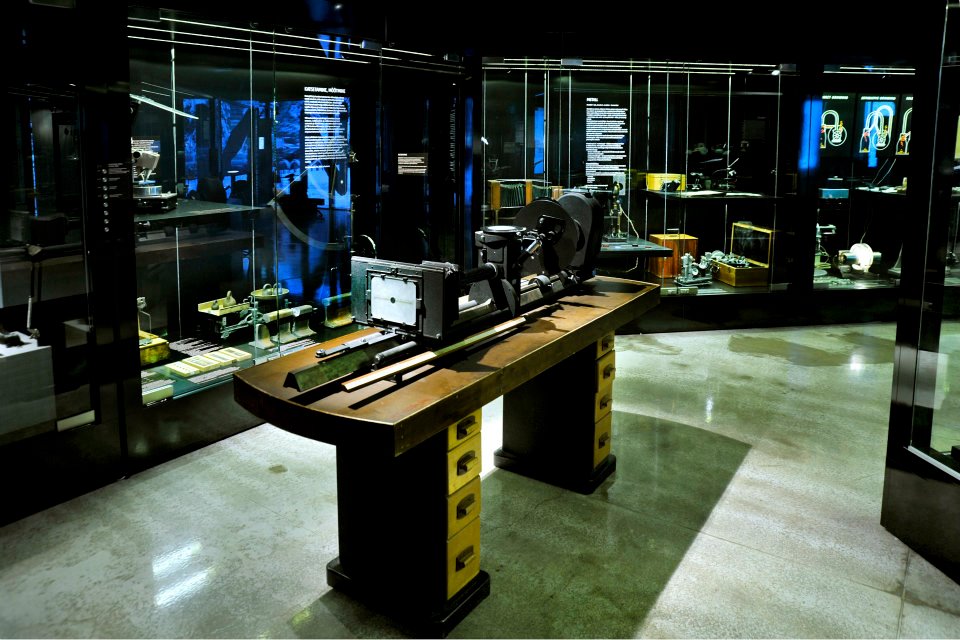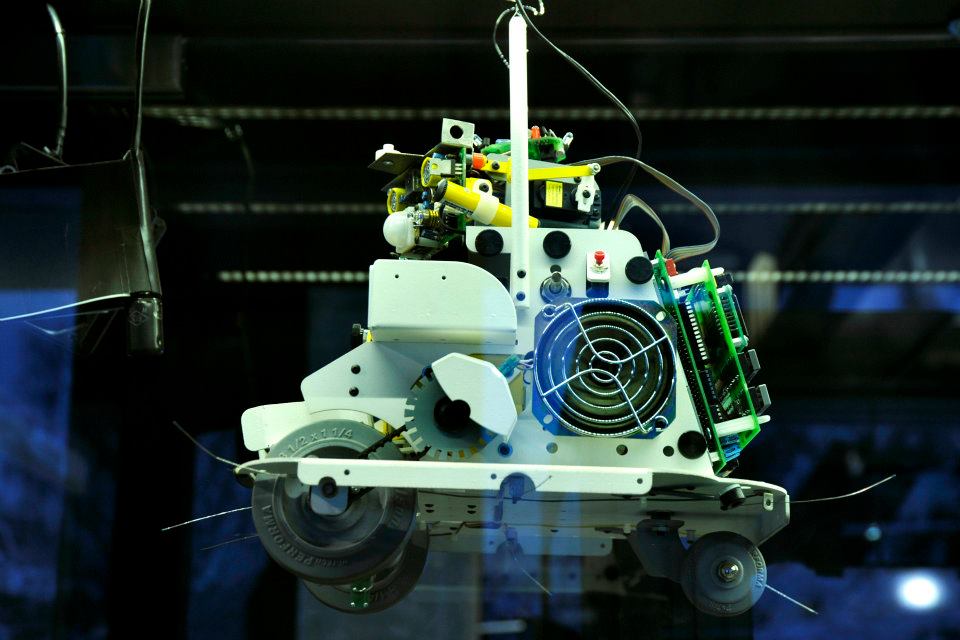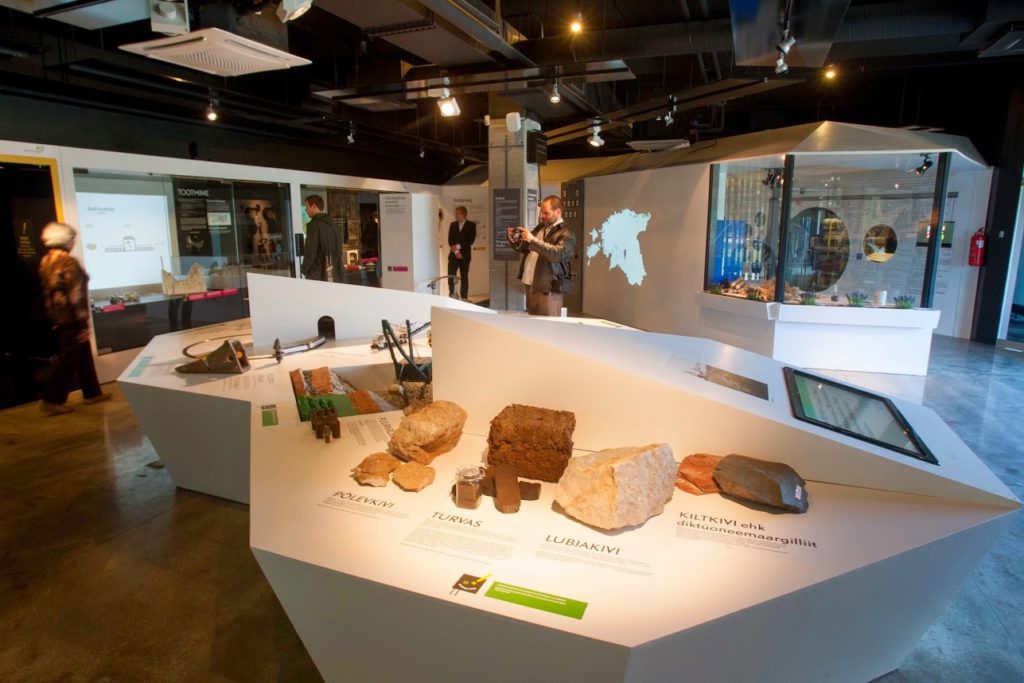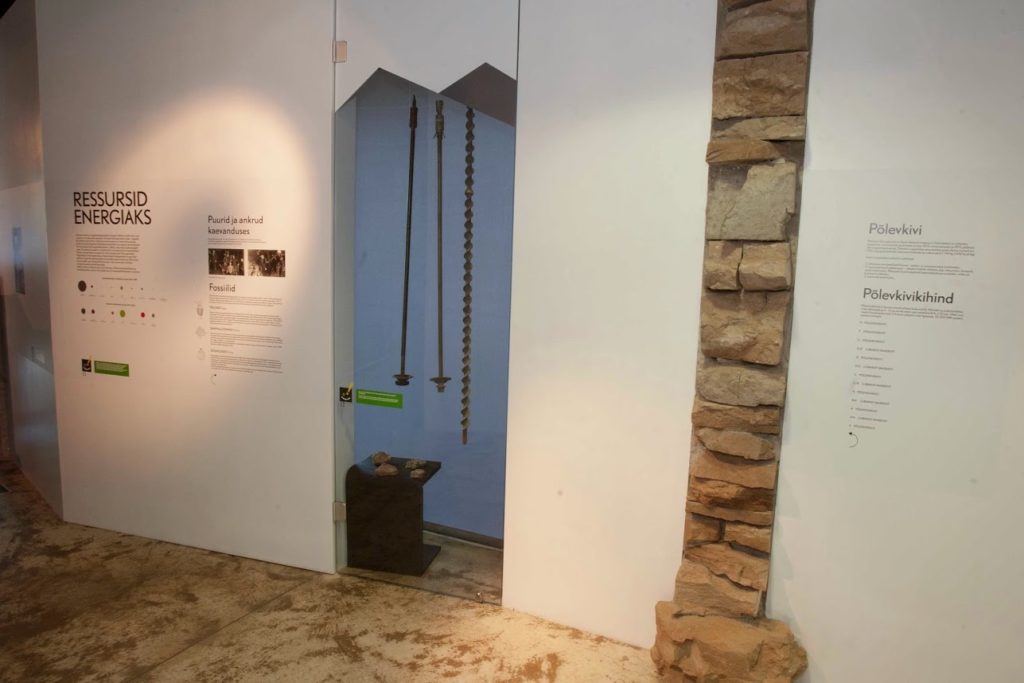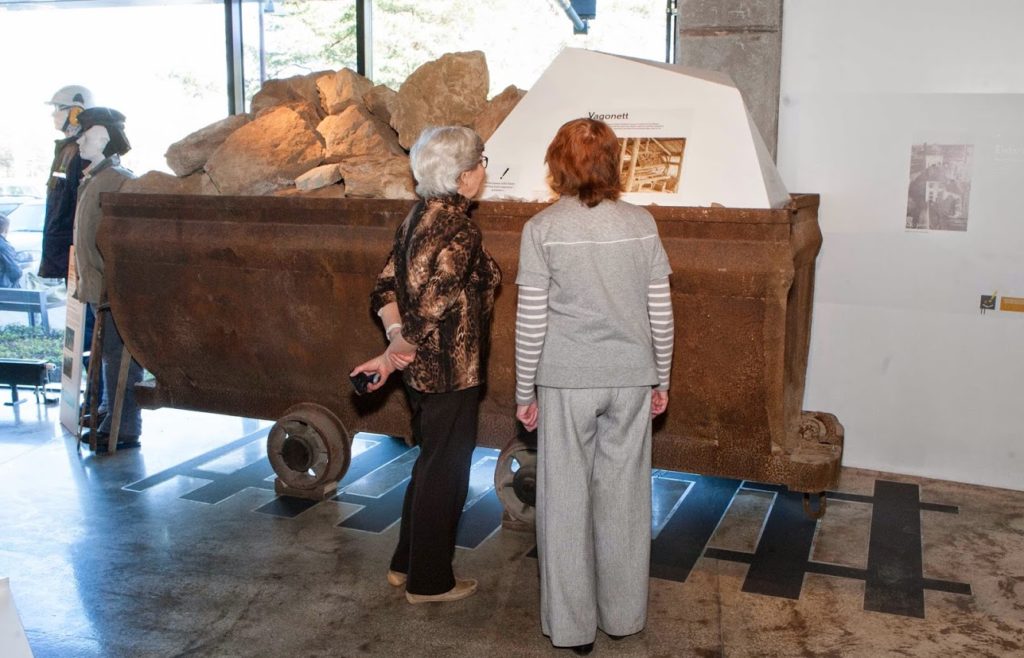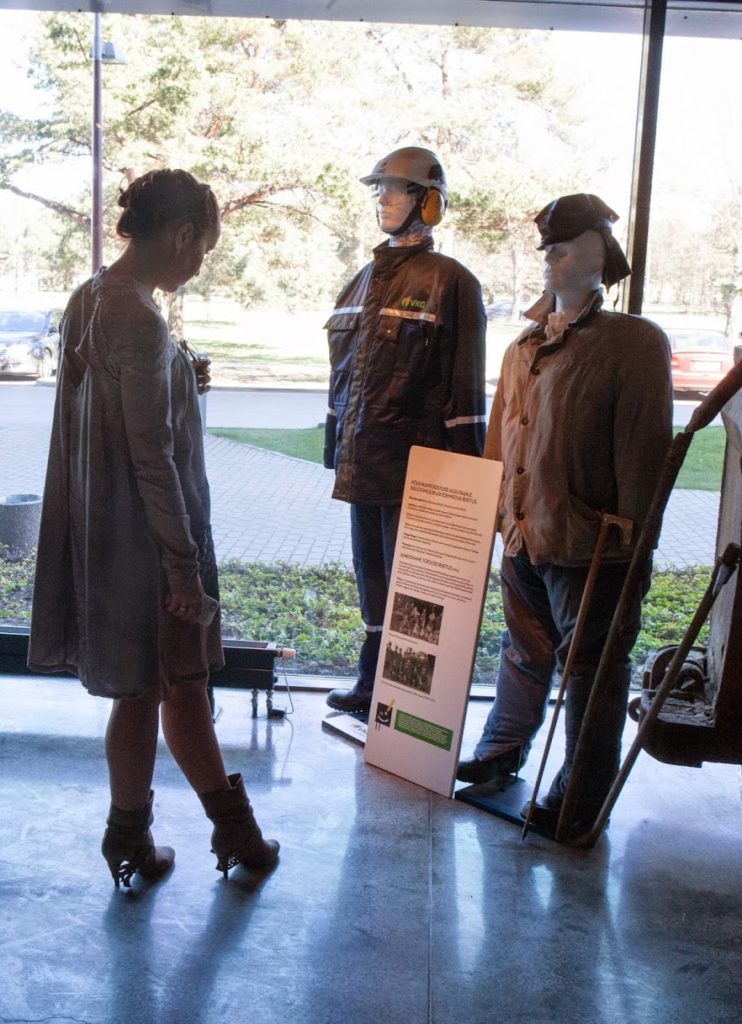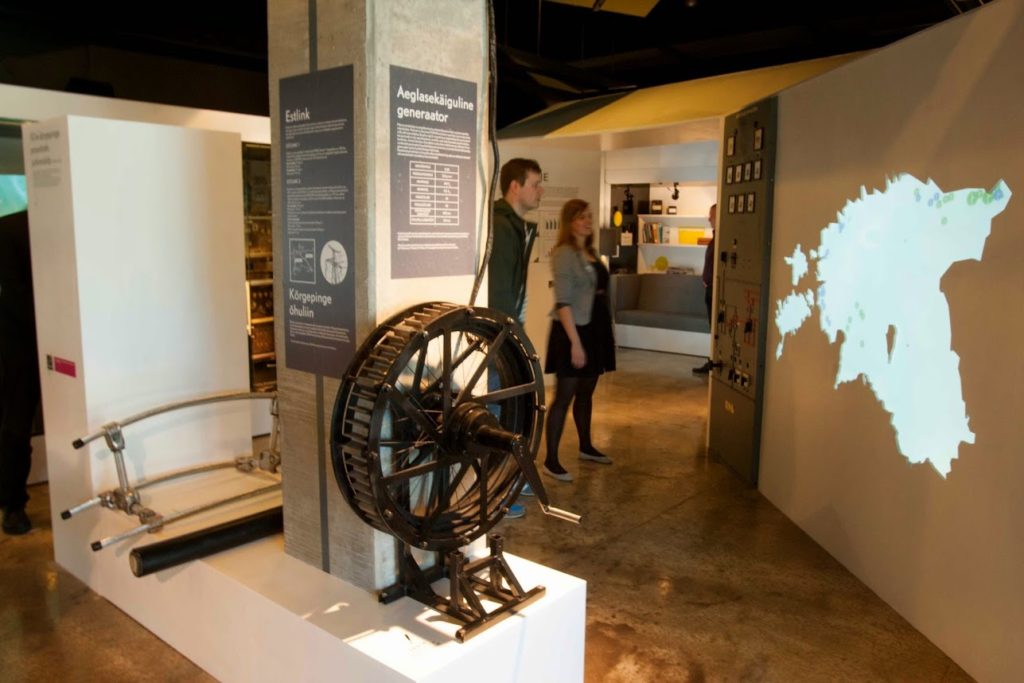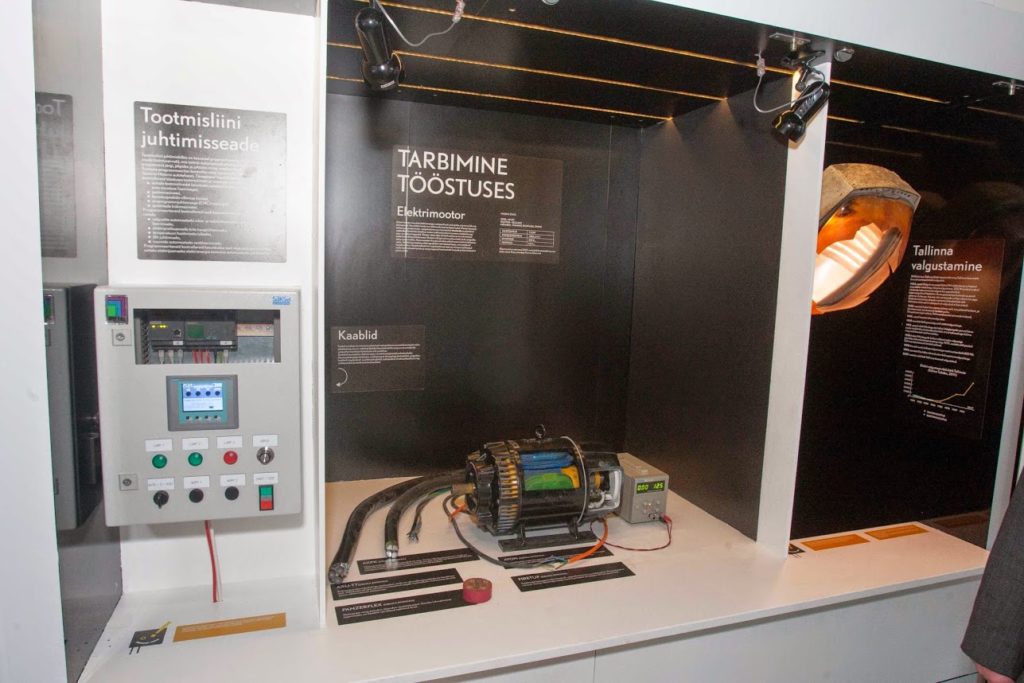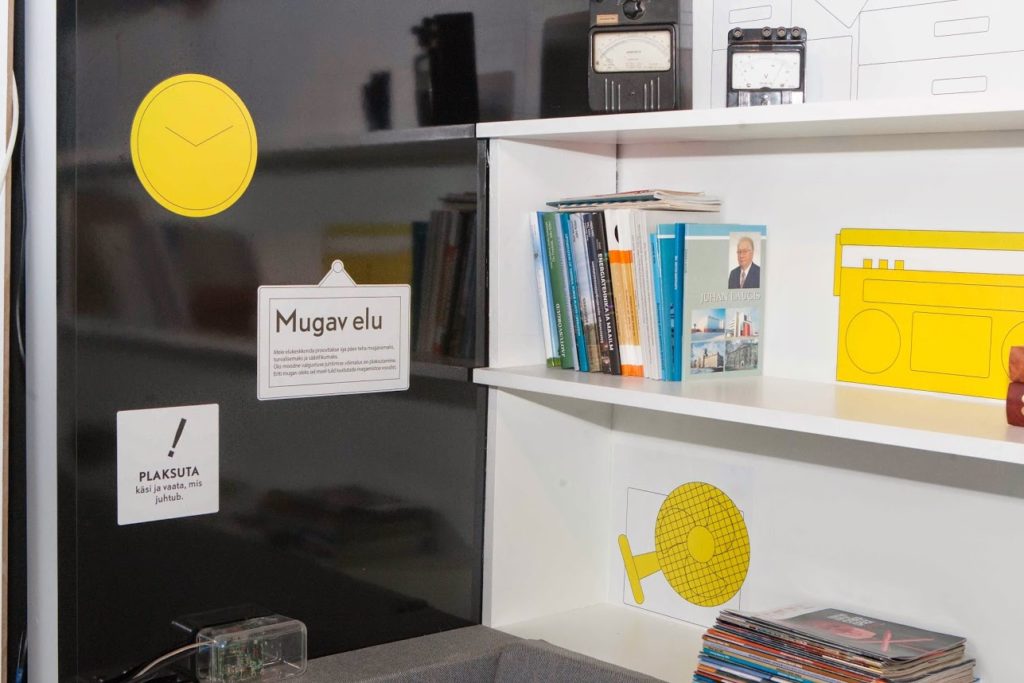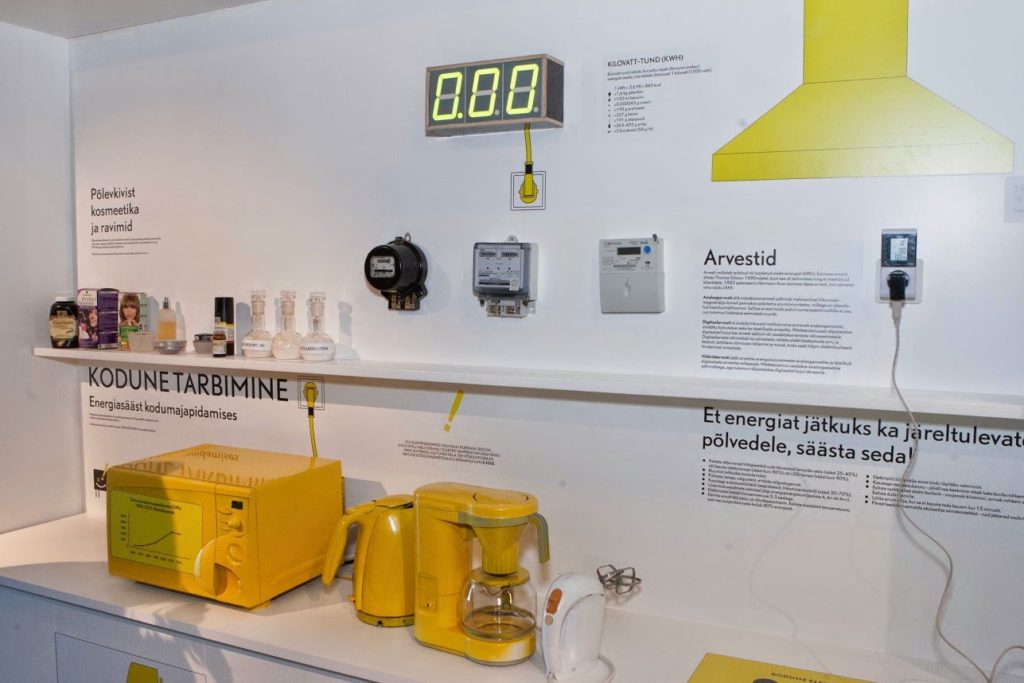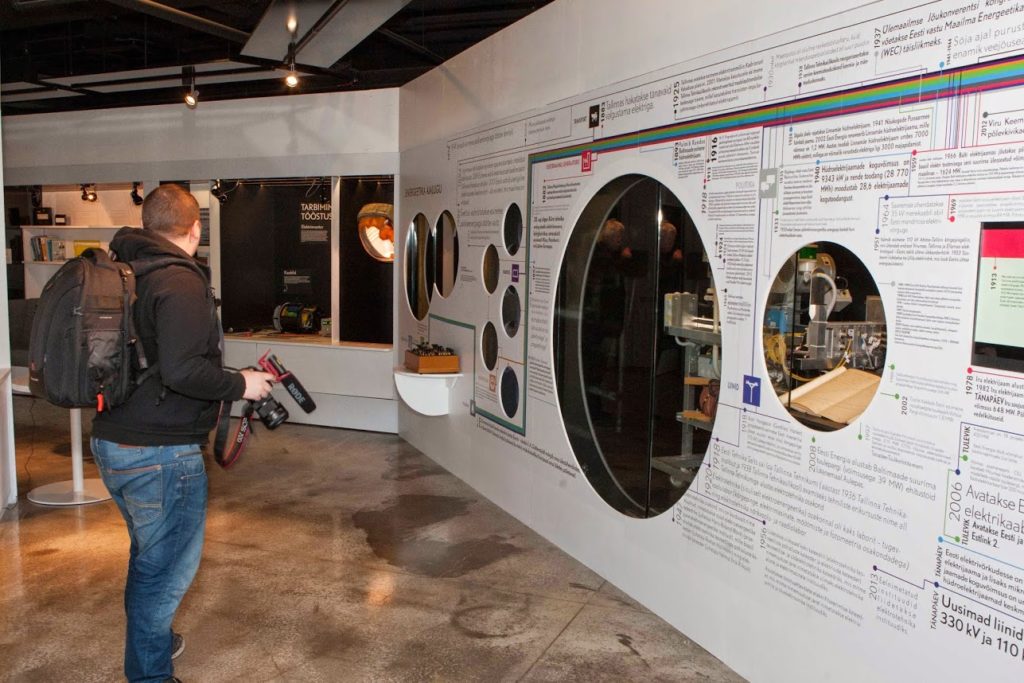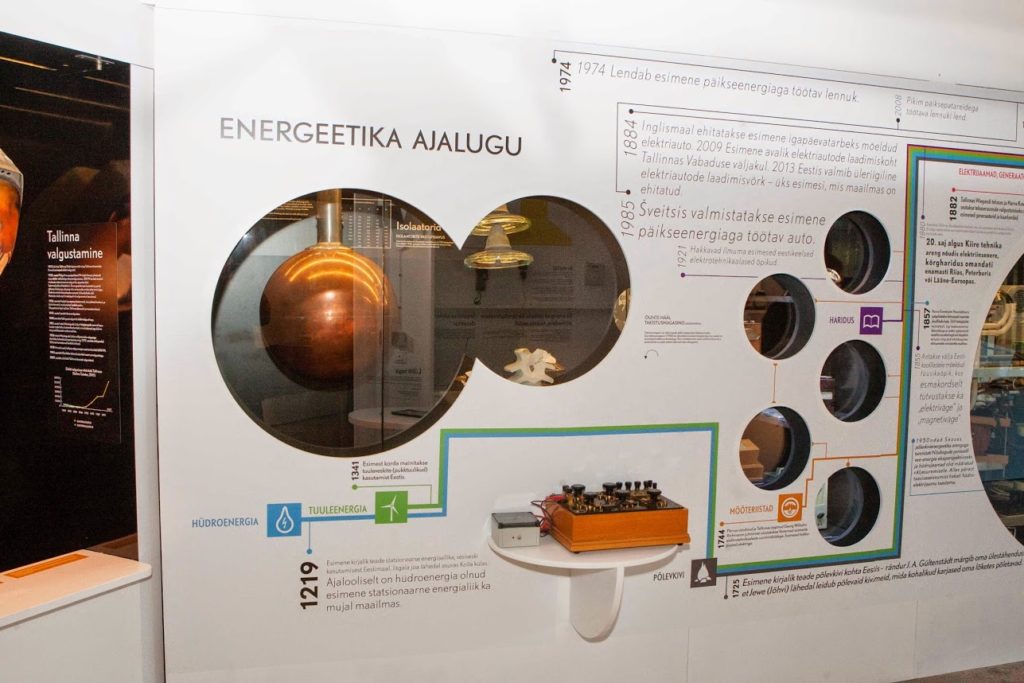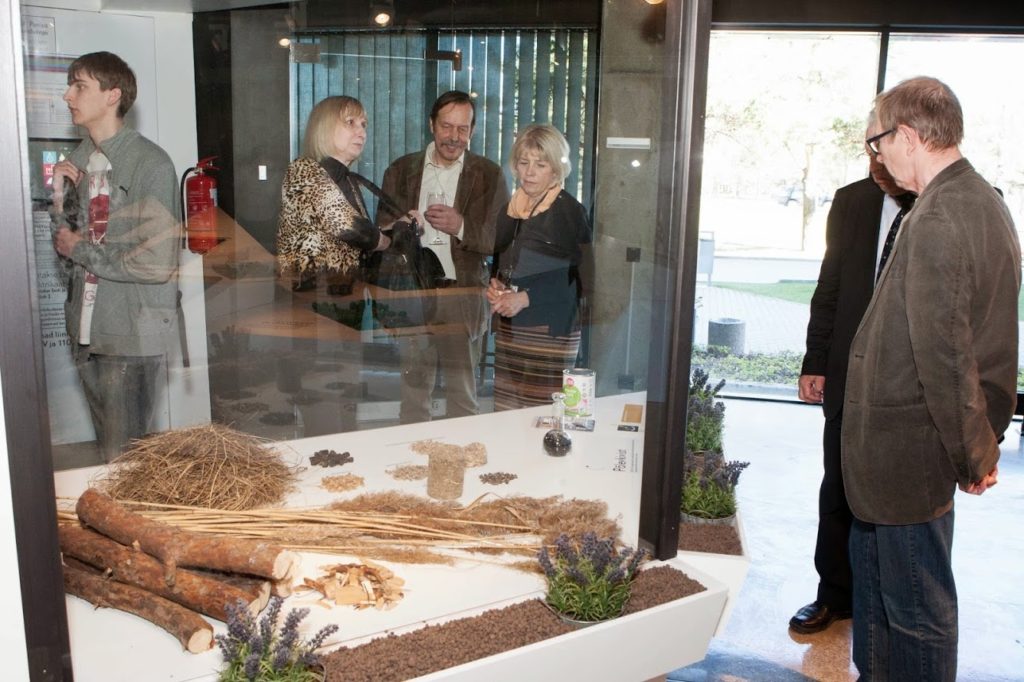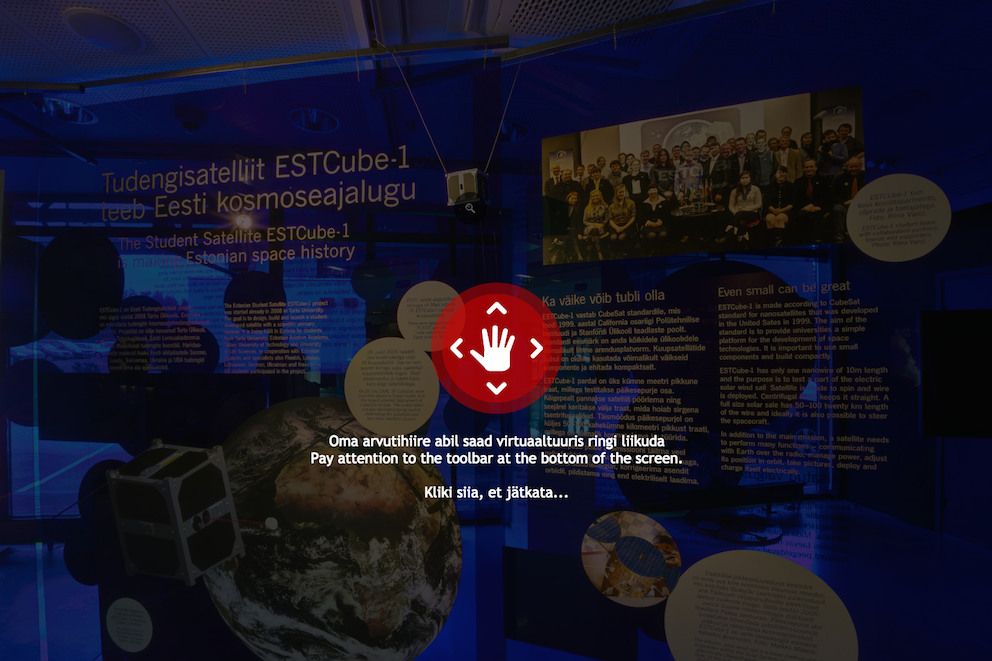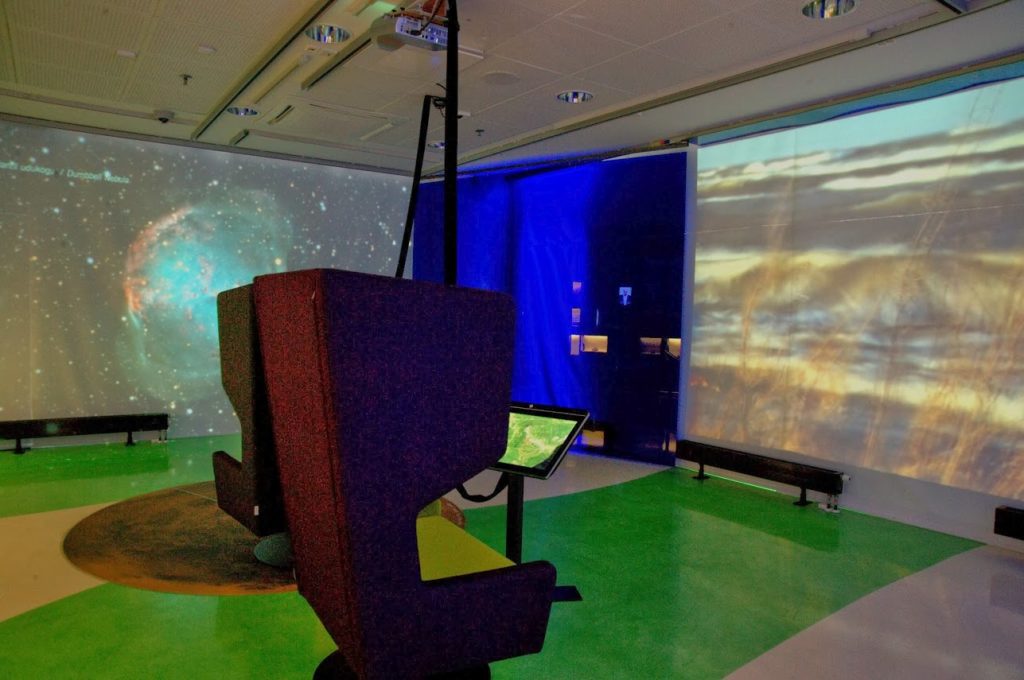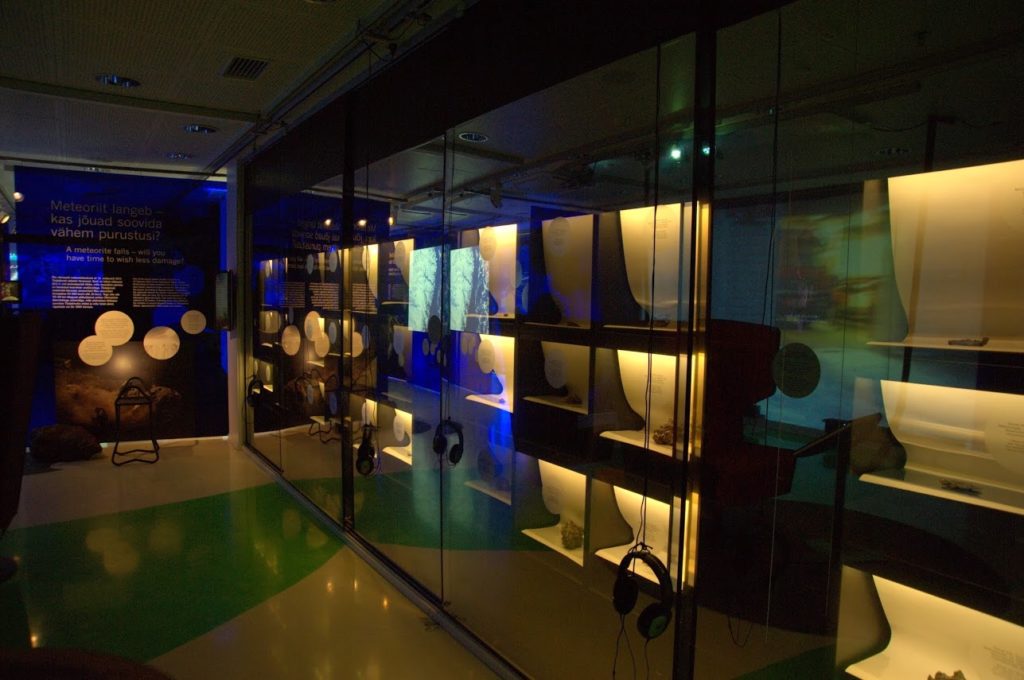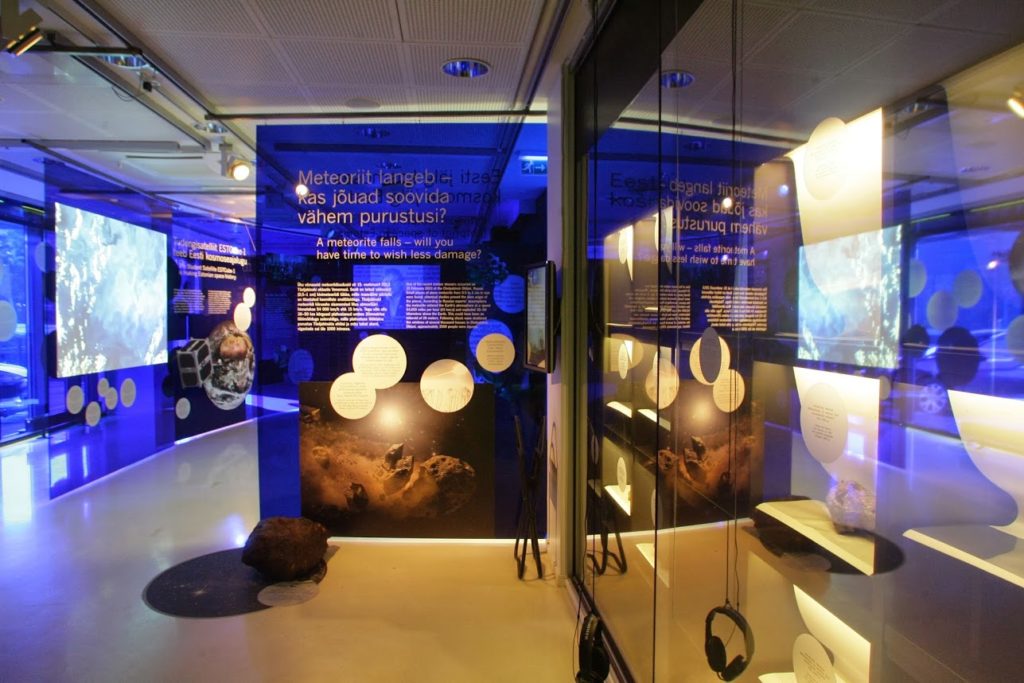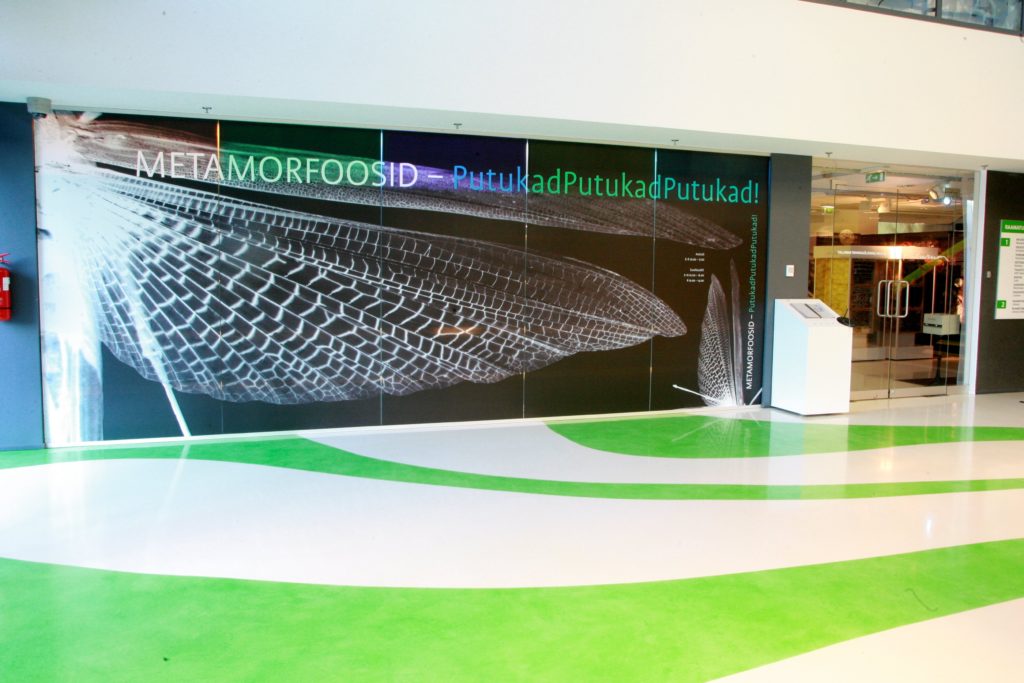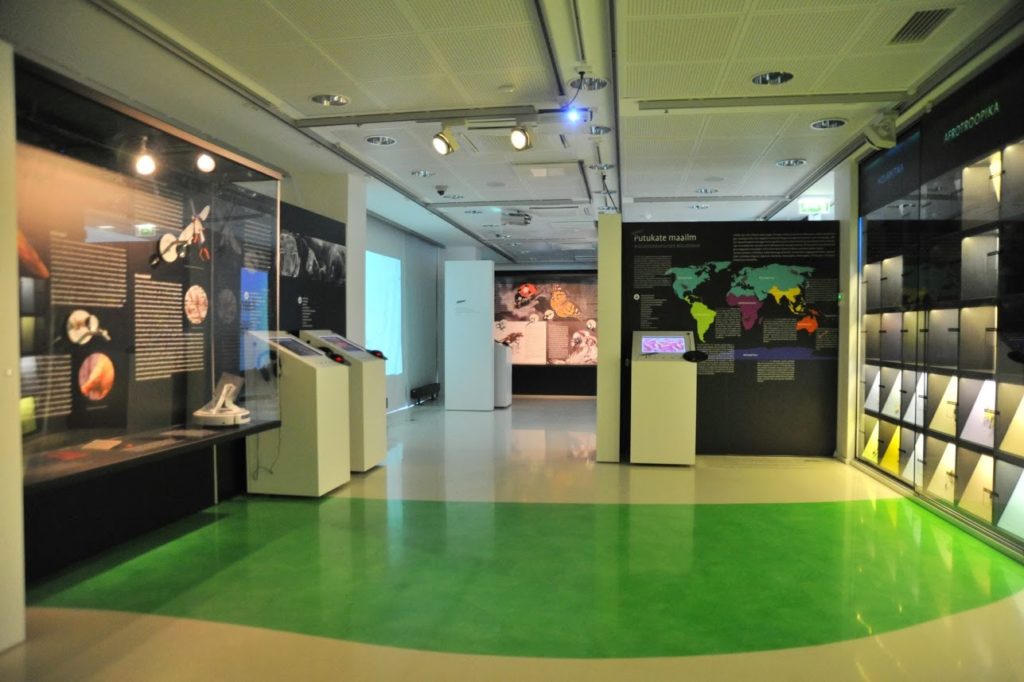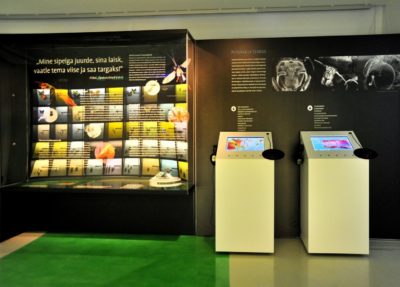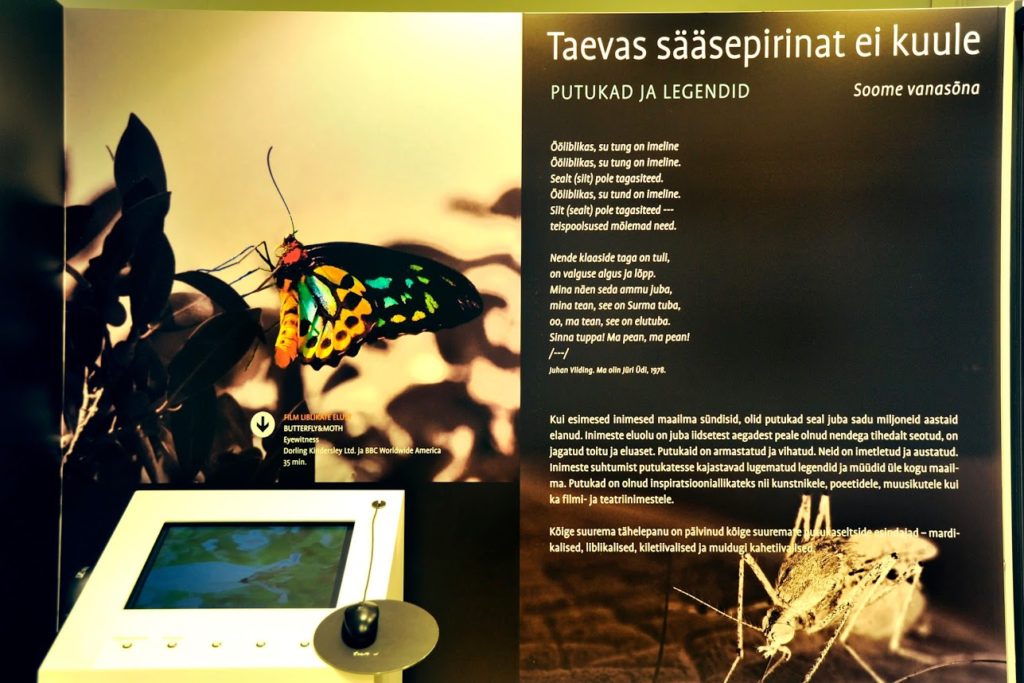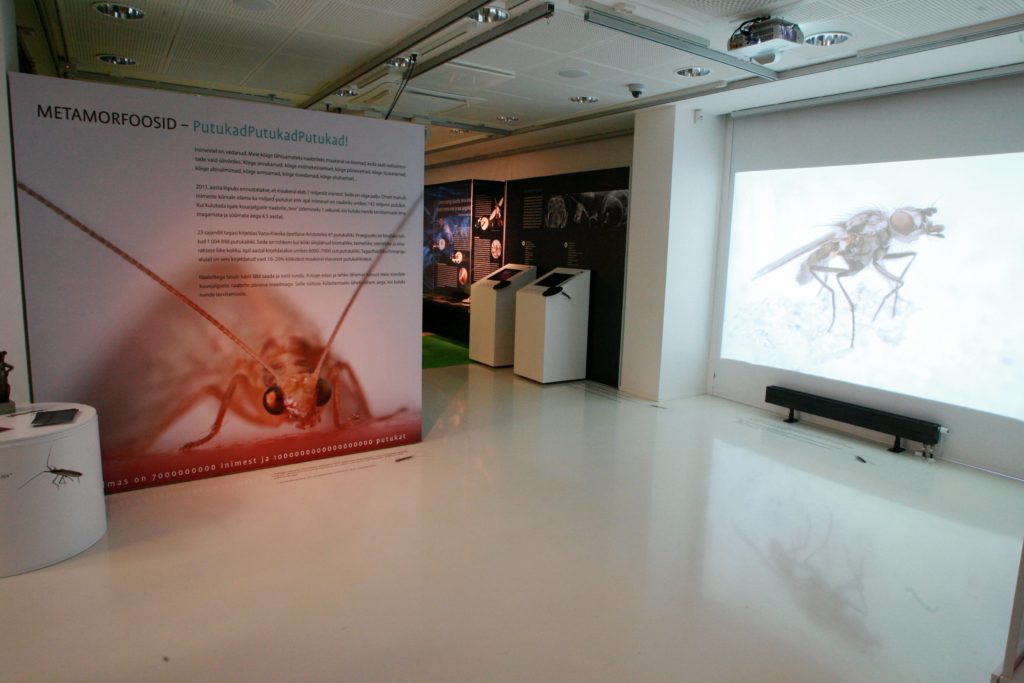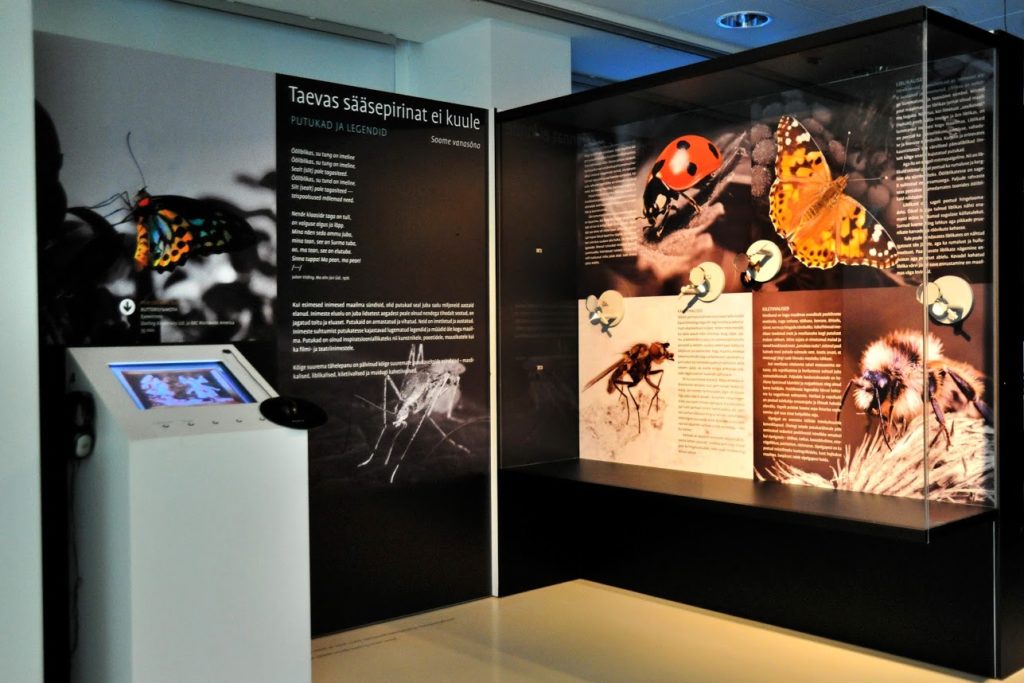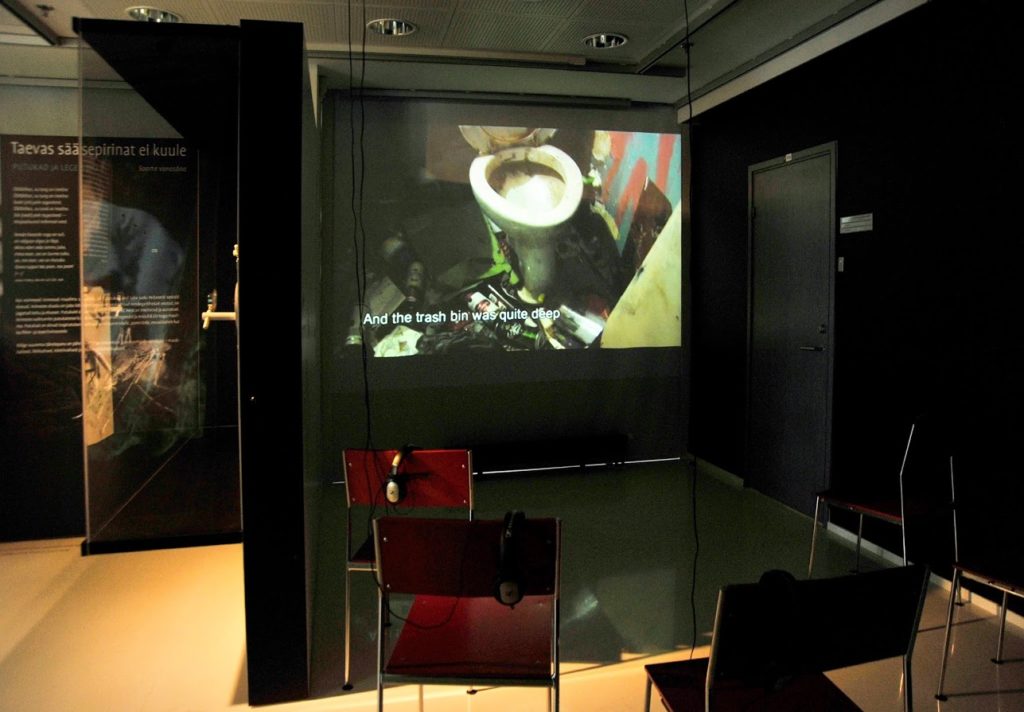Other events
Museum Nights
Instruments
Hodgepodge
Educational program was based on exhibition “Hodgepodge”. There were 2 different program by agegroups to choose from.
For smaller kids (until 13 years) there was an excursion in the exhibition. It was conducted in the way of active learning and listening. Teacher was asking leading questions and children were answering. The themes in the program were: the biggest problems in the world according to eating (eating too much and hunger), calories, how much you should eat, why some professions need more energy that usual people, eating habits, meals, tableware (history) and environmental problems. In between, there were fetching and guess-what-is-this type of games.
In the class room every child or children group drew a drawing about future food. It had to concern and improve some environmental problem or other problem that needs to be developed for more comfortable or sustainable eating. Children’s fantasy is endless and the future seems bright according to the drawings!
For older age group there were same themes dealt with but they were learned more independent way. Children formed groups by 4-5 people and they had some leading questions and a room plan. So they needed a little bit orientation and lot of thinking to do. They had 15 minutes to discuss the theme in groups and afterwards they had to present the theme to each other.
Volcano – creator and destroyer
The first exhibition of the revived TUT museum “Volcano – creator and destroyer” was great success: it was given the Estonian Museum of the Year Award – the “Museum Rat”. The dramatic eruption of Eyjafjallajökull volcano in Iceland had acted as a catalyst for opening the exhibition. The exhibition reflected the history and the present of volcanoes, and introduced the types of rocks formed as a result of volcanic eruptions.
Organizing the exhibition Volcano – creator and destructor was impelled by the dramatic eruption of Eyjafjallajökull in Iceland. The exposition introduces present-day and ancient volcanoes, as well as products of volcanic activity. Here in Estonia the ground is usually still and stable, but in many places worldwide we can clearly feel that the Earth is in constant movement. Volcanoes are a most prominent expression of “breathing” and activity of Earth. Even in volcanic regions life can be peaceful for quite long periods, investigations of nature phenomena through longer period of time reveal that volcanoes may remain dormant for hundreds, thousands, or even hundreds of thousands years, accumulating energy for new eruptions.
The exhibition was organised in cooperation with the Institute of Geology and Department of Mining at Tallinn University of Technology, Geological Survey of Estonia, Geological Museum of University of Tartu, Estonian Museum of Natural History and Institute of Earth Sciences at University of Iceland.
Gallery
Mechanics
The word mechanics originates from the old Greek expression mekhanikē tekhnē – “the art of building machines”. Different machines give people additional strength, speed and power. During the last 75 years, the Faculty of Mechanical Engineering of the Tallinn University of Technology has played an important role on the road of development from the Archimedes’ screw to the modern race car. Different devices and production technologies from mobile robots to formula race cars, from super-light bicycle frames made of composite materials to the armoured plating on military machinery, from the wind turbines at wind parks to the oil shale furnaces in thermal power plants are all studied, created and developed there.
Gallery
Martin Esinurm talking about the exhibition:
Animation on the exhibition about the machine, by Kristjan Holm.
Animation of the Mechanics department deans, by Kristjan Holm
Estonian Energy Industry
Although it was not so long ago when you could only read newspapers by candlelight and the only way to get warm was to burn firewood, we still cannot imagine a single day without heat and electricity – they have become so natural to us that we are unable to appreciate them in our everyday life.
We know more about electricity now than we did in history but do we really know how much work and sweat has gone into the safe and simple push of a switch that brings light in our rooms?
This exhibition shows you what types of fuel are used in Estonia, how the energy stored in them is converted into the heat and electricity that we need so badly, and how much of it are we using. We demonstrate the significance of the energy industry in giving a country its independence and economic stability, and introduce the people who have led the scientifically complicated process of producing and transporting power and heat. We also take a look into the future with a special emphasis on the sustainability of the country.
The fast development of technology demanded engineers. In order to train them, first the Technical Courses of the Estonian Society of Engineers were established, then the Tallinn College of Engineering, which later became the Tallinn University of Technology and the Faculty of Power Engineering. We explain the options of becoming an engineer, possible career paths and the essence of power engineering.
In this exhibition, the Estonian power industry is put both on a map of Estonia aswell as a timeline. Children will have fun playing an excavator operator and every visitor can take along a piece of the most valuable resource in Estonia – oil shale.
Gallery
Estonian Footprint in Space – Footprint of Space in Estonia
Man’s endless thirst for adventure has encouraged humanity to reach every corner of the globe. At the same time a man wants to reach ever higher and farther. Space era has provided a new opportunity to explore the world and get closer to the stars.
Today the services that the satellites offer are comfortable and granted that many of us don’t realise how the phone is positioning itself by many satellites that are situated around 30 000 kilometre from earth or that the picture to the TV comes from satellite that is situated even further. And even if the aim of every mission is to provide more comfortable service or to develop the science, it is only the tip of the iceberg. There is an enormous work done by different specialities for satellite to work or to arrive to space.
The exhibition was a joint project between the University of Tartu History Museum and the Tallinn University of Technology Museum. TUT Museum introduced the present day and future visions of the space technologies in our everyday life; TU History Museum concentrated on the past. Together the Estonian footprints in space were traced.
Gallery
Metamorphoses – Insectsinsectsinsects!
23 centuries ago the Ancient Greek philosopher Aristotle described 47 species of insects, in present time there are already more than one million known species of insects. Humans can consider themselves very lucky: our most important neighbours on Earth are creatures that can only be described with superlatives. The most numerous, most diverse, most exciting, most annoying, most helpful, cutest, sweetest, most important…

The exhibition “Metamorphoses – InsectsInsectsInsects!” told a story of the diverse world of insects and how the insects are a source of inspiration to engineers, artists, musicians and many more. The foundation of this exhibition was made up of the vast insect collection of entomologist Allan Selin and the texts written by the known nature guy Urmas Tartes. The socio psychological video “Jaanika” by Jaan Toomik and the short film “The Death of an Insect” by Hannes Vartiainen and Pekka Veikkolainen took the visitor to the world of transformation.
Gallery:
